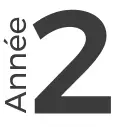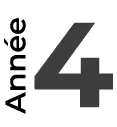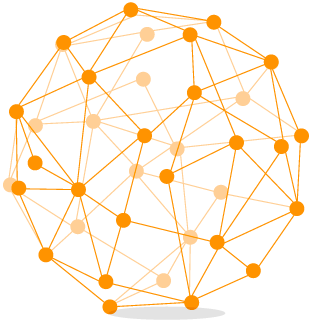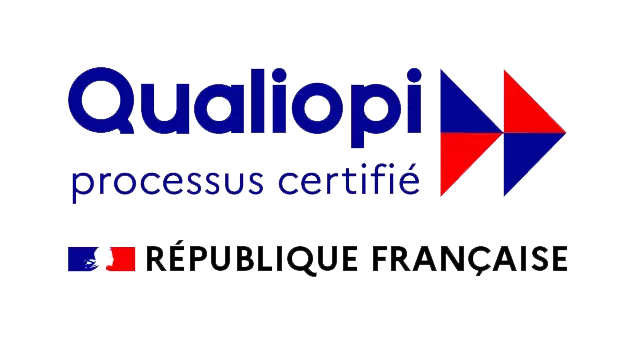ONLINE OPEN HOUSE
ONLINE OPEN HOUSE
August 28, 2024
from 6:30 p.m. to 8:30 p.m.
MEET US
Come and discover our training courses in strategic systemic approach, hypnosis and systemic coaching. You will meet the trainers and be able to talk with them!
" + details + "
" + ""; pc_confirmation.style.display = 'block'; var mp = document.querySelector('input[name="mp"]'); mp.value = '0'; } else { form.querySelector('._form- content').style.display = 'inline'; pc_confirmation.style.display = 'none'; } var hideButton = document.getElementById('hideButton'); , function() { var submitButton = document.querySelector('#_form_3_submit'); submitButton.disabled = false; submitButton.classList.remove('processing'); ]'); mp.value = '1'; window.location.href; }); const vgoAlias = typeof visitorGlobalObjectAlias === 'vgo': visitorGlobalObjectAlias; vgoAlias]; if (email && typeof visitorObject !== 'undefined') { visitorObject('setEmail', email); else if (typeof(trackcmp_url) != 'undefined' && trackcmp_url) { // Site tracking URL to use after inline form submission. _load_script(trackcmp_url); } if (typeof window._form_callback !== 'undefined') window._form_callback(id); }; window._load_script = function(url, callback, isSubmit) { var head = document.querySelector('head'), script = document.createElement('script'), r = false; var submitButton = document.querySelector('#_form_3_submit'); script.charset = 'utf-8'; script.src = url; if (callback) { script.onload = script.onreadystatechange = function() { if (!r && (!this.readyState || this.readyState == 'complete')) { r = true; callback(); } }; } script.onerror = function() { if (isSubmit) { if (script.src.length > 10000) { _show_error("3", "Sorry, your submission failed. Please shorten your responses and try again."); } else { _show_error("3", "Sorry, your submission failed. Please try again."); } submitButton.disabled = false; submitButton.classList.remove('processing'); } } head.appendChild(script); }; (function() { if (window.location.search.search("excludeform") !== -1) return false; var getCookie = function(name) { var match = document.cookie.match(new RegExp('( ^|; )' + name + '=([^;]+)')); return match ? match[2] } var setCookie = function(name, value) { var now = new Date(); var time = now.getTime(); var expireTime = time + 1000 * 60 * 60 * 24 * 365; now.setTime(expireTime); document.cookie = name + '=' + value + '; + ';path=/; Secure; SameSite=Lax;'; var addEvent = function(element, event, func) { if (element.addEventListener) { element.addEventListener(event, func); element['on' + event]; element['on' + event] = function() { oldFunc.apply(this, arguments); func.apply(this, arguments); form_to_submit = document.getElementById('_form_3_'); var allInputs = form_to_submit.querySelectorAll('input, select, textarea'), tooltips = [], submitted = false; var getUrlParam = function(name) { if (name.toLowerCase( ) !== 'email') { var params = new URLSearchParams(window.location.search); return params.get(name) || false; } // email is a special case because a plus is valid in the email address var qString = window.location.search; if (!qString) { return false; } var parameters = qString.substr(1).split('&'); for (var i = 0; i')); } } else if (elem.tagName == 'SELECT') { var selected = true; if (elem.multiple) { selected = false; for (var i = 0; i 31 && (charCode 57) && charCode !== 8) { e.preventDefault(); } }); }; var showPhoneInputError = function(inputId) { var errorMessage = document.getElementById("error-msg-" + inputId); var input = document.getElementById(inputId); errorMessage.classList.add("phone-error"); errorMessage.classList.remove("phone-error-hidden"); input.classList.add("phone-input-error"); }; var _form_serialize = function(form){if(!form||form.nodeName!=="FORM"){return }var i,j,q=[];for(i=0;ionline ericksonian hypnosis training
Online hypnosis training, Ericksonian hypnosis, conversational hypnosis, formal hypnosis, medical hypnosis, neuro-hypnosis, self-hypnosis or even show hypnosis, how to find your way around? Why is online Ericksonian hypnosis training effective? What types of hypnosis for which pathologies? What training? What are the benefits of LACT’s online Ericksonian hypnosis training?
Complete training
in brief therapy and hypnosis The first live certified web training
International diploma
12 international trainers
Medical professors, psychiatrists, hypnotherapists, psychologists and researchers
|
|
|
|
|
|
|
|
|
|
|
|
Exceptional partners

Understanding the tools and techniques of Ericksonian hypnosis as part of an online means building a therapeutic and secure relationship, bringing people to connect with their resources, using sensory language, put people back in experiences they live in the present, build, in a narrative approach, a meaningful objective for the subject, think about the intervention vis-à-vis third parties.
"The techniques in Ericksonian hypnosis as in brief therapy are thought of as relational techniques because they take on meaning in a dimension of interaction: the use of dissociated language, strategic questions, metaphors, focusing on sensory or on movements, therapeutic tasks, are actions that set the relationship in motion." Dr. Julien Betbeze

Testimony from Dr. Julien Betbèze,
educational advisor
for LACT hypnosis training
Testimony of Michèle Ritterman,
Masterclass trainer and former collaborator of Dr. Milton Erickson
A course of interactive training intended for practitioners who wish to understand the tools and techniques of hypnosis within the framework of an interactional approach.
These techniques also allow you to develop your relational skills, as a speaker, to better capture the present moment, here and now.
This training in Ericksonian hypnosis aims to connect the different worlds of hypnosis, through the founding contributions of Milton Erickson, precursors in clinical hypnosis while taking into account the family and systemic readings of Salvador Minuchin and Jay Haley.
These modules aim to acquire an approach that connects you intimately to your patient in an approach that combines rigor and intuition, voice and gaze, sensations and relationships. Our objective is to remain in a very open reading stemming from psychiatry and clinical psychology.
The online Ericksonian hypnosis training aims to understand the tools and techniques of hypnosis as part of an interactional approach.
These techniques will allow you to discover and master verbal and non-verbal language as well as to approach induction techniques. As a speaker you will deploy a new quality of presence and relationship thanks to the techniques of hypnosis to allow you to better capture the present moment, here and now, through the experience of body and mind.
The learning is centered on practice: simulations, role plays, exercises, case studies and live supervisions.
The courses are provided by international trainers from the medical world and scientific research. Dr. Eric Bardot, Dr. Bruno Dubos, but also Dr. Julien Betbeze, Michelle Ritterman PhD, Dan Short PhD and Vincent Gérard will share their experience and their passion during this in-depth training.
Training course 2024/2025
Systemician Diploma - Relationship Clinician
Price for individuals: €4,500
€505/month
In 36 monthly payments without commitment
460 €/month
In 48 monthly payments without commitment
Year 1
FOUNDATION
LEVEL
Prerequisites :
have the BAC level
with or without exp. clinical
Start of courses : October 1, 2024
Price of training : €4,500
(special rate excluding special offer)
116 hours of lessons
3 individual supervisions
Approximately 116 hours of personal work
ㅤ
foundation level certificate
Year 2
PRACTICAL LEVEL
Prerequisites :
having obtained the Foundations level
or one of the Paris 8 University Diplomas
Relationship clinic and strategic approach
Strategic systemic approach to education
Start of courses : September 4, 2024
Price of training : €6,800
(special rate excluding special offer)
183 hours of lessons
3 individual supervisions
Approximately 183 hours of personal work
ㅤ
- Questioning and relationship
- Observations of sessions
- Strategic dialogue
- Mobilize the strengths of the individual
- Prescription of tasks
- The emotions
- Systemic Grid Practice
- Solution-oriented intervention
- Intervention under duress
- Ambivalence and emotions
- Couples and families
- Collective supervision
- Individual supervision
- Authority Patterns
- Improved practice with FIT
- Practice observation
- Presence and relationship
- Create and grow your business
- International Webinar
practical level certificate
Year 3
PROFESSIONAL
LEVEL
Prerequisites :
having validated
the Practical level
Start of courses : September 27, 2024
Price of training : €6,900
(special rate excluding special offer)
186 hours of lessons
3 individual supervisions
186 hours of personal work
+ 147 hours of internship
- Masterclass Prof. Giorgio NARDONE
- Phobias / Doubt / Panics
- Depression / PTSD
- Strategic intervention with children and adolescents
- Couples, families: complex situations
- Harassment
- Syprene experience sharing
- Practice and development
- Improvement of practice and quality monitoring
- Ritterman Masterclass: creating an operational reality
- The narrative approach, a resource for complex intervention
- Create and grow your business
- Tutoring and defense
- Practice observation
- Stress and self-help
- International Webinar
- Collective supervision
- Individual supervision
systemician®
relationship clinician® diploma
Year 4
Clinical Master
Hypnosis Master
With
![]()
Prerequisites :
having validated
relationship clinician
diploma Price of training : €3,900
(special rate excluding special offer)
Start of courses:
October 10
- Obsessive Disorder / OCD / Paranoia / Borderline
- Eating Disorders / Psychotic / Sexual Disorders
- Addictions
- Hypnosis and tobacco
- Hypnosis and eating disorders
- Bond and Relational Worlds Therapy
- Improvement of practice and quality monitoring
- International Webinar
- Collective supervision
- Individual supervision
2023/2024 training course
Ericksonian Hypnosis Master's Degree
LEVEL
Beginner
Prerequisites:
BAC level
34 hours of lessons
35 hours of personal work approximately
LEVEL
Foundations
Prerequisites:
Health professionals / helping relationship and having followed the initiation level
100 hours of lessons
3 individual supervisions
100 hours of personal work
+ 147 hours of internship
in common core
with the strategic systemic approach
Master Hypnosis
certificate initiation level
Initiation
Prerequisites:
Health and helping relationship professionals
34 hours of lessons
35 hours of personal work approximately
in common core
with the strategic systemic approach
Hypnosis certificate
initiation level
FOUNDATIONS
Foundations
Prerequisites:
having followed the initiation level
97 hours of lessons
3 individual supervisions
100 hours of personal work
+ 147 hours of internship
in common core
with the strategic systemic approach
DIPLOMA
Masters Hypnosis
Systematic approach
PRACTICAL LEVEL
CONVENIENT
Prerequisites:
having validated
the Foundations level
150 hours of lessons
3 individual supervisions
150 hours of personal work approximately
- Questioning and relationship
- Observations of sessions
- Strategic dialogue
- Mobilize the strengths of the individual
- Prescription of tasks
- The emotions
- Systemic Grid Practice
- Solution-oriented intervention
- Intervention under duress
- Ambivalence and emotions
- Couples and families
- Collective supervision
- Individual supervision
- Authority Patterns
- International Webinar
- Practice observation
- Create and grow your business
practical level certificate
1 diploma accessible
after obtaining the
practical certificate
systemic coach diploma
Systematic approach
PROFESSIONAL
LEVEL
IMPROVEMENT
Prerequisites:
having validated
the Practical level
184 hours of lessons
3 individual supervisions
180 hours of personal work
+ 147 hours of internship
relationship clinician diploma
1 diploma accessible after obtaining the Clinician of the relationship diploma
clinical master's degree
in brief
strategic systemic
Clinical Masters with
![]()
Frequently Asked Questions
SCHOOL COURSES
- online training can I integrate without clinical practice?
Our training courses accessible with a Bac level, without clinical experience are as follows:
- https://www.lact.fr/formation-systemique
- https://www.lact.fr/diplome-coach-systemique-en-ligne
- https://www.lact.fr/management-de-la-relation
Our training courses accessible with a Bac+3 in the field of health with clinical experience.
- https://www.lact.fr/du-systemique-strategique-avec-paris-8-en-ligne
- https://www.lact.fr/formation-hypnose-ericksonienne-en-ligne
Accessible training with a Bac+4/5 health professional with confirmed clinical experience.
For any registration, an interview may be proposed with Mr. Vitry Grégoire, Director of Lact, during which your professional background, your motivations and your project will be evaluated, in order to validate or not your application file.
- What are the differences between the DU Clinic of the relationship and strategic intervention and the LEVEL 1 foundations of the school?
There is little difference between LEVEL 1 in systemic approach and DU
Several modules are common core except:
- The “Strategic Communication” module proposed in LEVEL 1, replaced by the “Internship and tutoring” module, just like the “improvement of practice” module replaced by the “emotional regulation” course.
Of course, you have the possibility to register for the modules if you wish. You will be asked to validate them if you then wish to join LEVEL 2 of the school. - The collective supervision module for which you have a specific supervisor.
- A practical internship of 147 hours and the defense of a dissertation is required to validate the DU
- What are the prerequisites for joining the school and the DU?
The "Relationship Clinic and Strategic Intervention" DU is open to professionals from the clinical or social world who wish to obtain University recognition.
It is necessary to hold a BAC + 3 and clinical experience in helping relationships. With regard to the course of the school in strategic systemic approach:
- Foundations level: Bac level.
- Practical Level: You must have validated the foundations level.
- Advanced level: You must have validated the foundation and practical levels.
- Is it possible to assert systemic equivalences?
Requests for equivalence are made on file with an interview.
- What are the conditions for obtaining certification and validating the years?
Foundations level:
- have followed 75% of the live sessions and obtained the minimum mark of 7.5/10 for all the tests and 6/10 for the homework for the year.
- have followed the 3 hours of individual supervision and validate the duty of follow-up.
- present a case in collective supervision and validate the duty of supervision.
Practical level:
- have followed 75% of the live sessions and obtained the minimum mark of 7.5/10 for all the tests and 6/10 for the homework of the year.
- justify a practice of 10 hours of intervention.
- have validated the 3 hours of individual supervision and validate the duty of follow-up.
- present a case in collective supervision and validate the duty of supervision.
Level Perfection of the “Clinician of the relationship” training course (generalist or clinical course)
- have followed 75% of the live sessions and obtained the minimum score of 7.5/10 for all the tests and 6/10 for the homework for the year.
- justify a practice of 50 hours of intervention.
- have validated the 3 hours of individual supervision and validate the duty of follow-up.
- present a case in collective supervision and validate the duty of supervision.
- carry out a 147-hour internship which will be the subject of a dissertation in which your appropriation of the systemic and strategic model and your implementation in the field will be assessed.
- What recognition of the diploma issued at the end of the strategic systemic training course?
At the end of the 3 years of the course of strategic systemic training, you will be awarded the diploma "Systemician - Clinician of the relationship".
Certain courses may be subject to a University certificate. - Is this training suitable for coaches?
Certain training courses (generalist, systemic coach or systemic management and coaching) perfectly concern coaches.
It will allow you overall to acquire a systemic reading in your fields of intervention and more specifically to learn how to analyze the context of the change project, to recognize and manage the different types of resistance to change and to develop resilience at work, in particular with the business path. - Can we follow only the business modules?
You can follow the company modules separately.
However, this does not give you access to the Systemic Coach diploma. This diploma is issued to you after having obtained at least the certification of levels 1 and 2 and/or 3, and of the business modules to which you have access throughout the duration of your training. - I am currently HRD and I want to train in psychotherapy to better support my employees.
Can I join the school? The training course is open to managers, HRDs, or for those who work in HR departments, social relations or training.
You will learn to recognize the dynamics that lead to and fuel the individual or collective problems that you may encounter in your business life (burn-out, harassment, relationship problems, organizational change) and learn to quickly find effective and lasting solutions. Thanks to its methodology, you will also develop strategic skills to better intervene in the field of business or within an institution. You can also more specifically integrate our relationship management training which allows you to deploy your resources to improve your professional performance but also to better understand the relationship and psychological issues. All our training courses are provided by specialized international trainers from the world of business and university.
- I cannot fully commit myself due to scheduling and/or budget constraints.
What are my possibilities? It is entirely possible for you at first to follow only a few à la carte modules to meet your needs without committing to the full year.
A 30% discount will be granted to you from an amount of 3,000 euros. You can also complete the Practical Year and the Relationship Clinician Development Year in 2 years. - If I want to test a few modules before committing to the year, is that possible?
You can completely follow individual modules before registering for the year. In this case, the modules you have taken may be deducted from the annual price, for registration during the year.
- What are we asked for as an internship?
It is a practical and/or observation internship, which you can do for example in a center, a firm, an association, or an institution according to your profile and which allows you to deploy your learning.
From the 2nd and 3rd year, you are asked to practice. If you already practice, it is possible to integrate your own practice into your internship but you will be asked, as far as possible, to devote time from your practice to the application of the model in order to produce work related to your training.
FUNDING
- Can your training be financed through the CPF or otherwise with the employer?
You have the option of applying for funding directly from your employer.
To date, it is possible to obtain funding via your CPF for the "create your own business" training.
- I am a job seeker, is it possible to apply for funding from Pôle Emploi?
You have the possibility to apply for funding from Pôle Emploi, via the KAIROS platform, for this you can contact Leila by email: - Can we pay in several installments?
You can pay in 3 installments (with
50 € administration fee ) or in 10 installments (with 150 €) directly on our site when you register.
| Funding arrangements | Persons concerned |
|---|---|
| Personal financing in 1 installment, 3 installments + €50 application fee, 10 installments + €150 application fee | Anyone wishing to register for LACT training |
| Company-HR Department (via attached OPCO) | company employee |
| CPF via Moncompteformation.gouv.fr | Employee, job seeker, liberal profession, business manager |
| Pôle Emploi (via KAIROS) Regional councils | Job seeker |
| FIFPL (liberal prof. excluding doctors), FAF-PM and ANDPC (doctors), AGEFICE (entrepreneur), FAFCEA (craftsman, merchant) | Liberal profession, business manager, auto entrepreneur (in addition to or instead of the CPF) |
| The skills development plan | Employee and civil servant (large company and administration) |
| Agefiph | Person with a disability |
| CSP (Professional Security Contract) | Employee in situation of economic redundancy |
PRACTICAL PROGRESS OF OUR TRAINING
- How is the remote practice going?
All classes take place via the ZOOM platform which offers the possibility of creating different spaces/rooms to offer you group work (regardless of the size of the group). In this, it is very easy for us, logistically, to organize these practice times.
- How to connect to the courses?
To connect to the lessons, you must have a good internet connection and in the event of an unstable connection, you can do so by telephone, while following the videoconference.
- Is it compulsory to be present for the lessons?
The training is in web-face-to-face, so you are asked to be present at the lessons.
However, we exceptionally accept a few absences (while recalling that one of the module validation criteria is an attendance time of 75%). Although this training takes place only online, we have interaction at heart, because practice is a central point in learning and these face-to-face sharing times allow us to set up an interactional and experiential dynamic. Experience is essential to learning.
- Is all of the training taking place remotely?
The entire training takes place remotely but you have the possibility of carrying out your hours of individual supervision in Paris in person. New for 2023: We are setting up the possibility of taking some face-to-face courses (limited number of places).
- How do we access course content?
You have access to the video recording, the slides, the bibliography, an exchange forum and all the knowledge tests for the validation of your modules by logging into your Moodle account. This account is accessible throughout the duration of your registration at the school.
- Are all the courses in French?
Some courses are in Italian or English simultaneously translated into French.
To find out the prices, select the training that interests you
MAPPING OF ALL LACT TRAINING COURSES
AND STRATEGIC APPROACH
Prerequisites
_
general
Bachelor's degree
with or without
clinical experience
clinical
Bac +3
with
clinical experience
Bac +5
with
clinical practice
education
Bachelor's degree
with or without
teaching experience
Bac +3
with
teaching experience
BUSINESS
Bachelor's degree
with or without
coaching experience

LACT
CERTIFICATE -
FOUNDATIONS LEVEL
UNIVERSITY
DIPLOMA -
RELATIONSHIP
CLINIC AND
STRATEGIC
INTERVENTION -
with
Paris 8 University
DIPLOMA
-
MASTER
®
IN
STRATEGIC SYSTEMIC
LACT
CERTIFICATE –
EDUCATION
FUNDAMENTALS LEVEL
UNIVERSITY
DIPLOMA -
STRATEGIC
SYSTEMS APPROACH TO
EDUCATION
-
with
Paris 8 University
LACT
CERTIFICATE -
SYTEMIC
COACHING
FUNDAMENTALS LEVEL

LACT CERTIFICATE - PRACTICAL LEVEL
COACH
DIPLOMA ®

SYSTEMICIAN ® - RELATIONSHIP CLINICIAN ® DIPLOMA - ADVANCED LEVEL
CLINICAL MASTER®![]()
DIPLOMA MASTER HYPNOSIS
AND STRATEGIC APPROACH

general
Bachelor's degree
with or without
clinical experience
clinical
Bac +3
with
clinical experience
Bac +5
with
clinical practice
LACT
CERTIFICATE -
FOUNDATIONS LEVEL
UNIVERSITY DIPLOMA
RELATIONSHIP
CLINIC AND
STRATEGIC INTERVENTION
with Paris 8 University

MASTERS
®
DIPLOMA IN
STRATEGIC SYSTEMIC
BUSINESS
Bachelor's degree
with or without
coaching experience
education
Bachelor's degree
with or without
teaching experience
Bac +3
with
teaching experience
LACT
CERTIFICATE -
SYTEMIC
COACHING
FUNDAMENTALS LEVEL
LACT
CERTIFICATE –
EDUCATION
FUNDAMENTALS LEVEL
UNIVERSITY
DIPLOMA –
STRATEGIC
SYSTEMS APPROACH TO
EDUCATION
with Paris 8 University

PRACTICAL LEVEL CERTIFICATE
DIPLOMA
®

SYSTEMICIAN ® - RELATIONSHIP CLINICIAN ® DIPLOMA - ADVANCED LEVEL

CLINICAL MASTER®![]()
DIPLOMA MASTER HYPNOSIS
Interview Anne-Charlotte de Maupeou
Hypnosis therapist and systemicist
Ericksonian hypnosis and the different types of hypnosis
Online certified Ericksonian hypnosis training
Hypnosis, an ancient practice
 From the Greek hypnos, sleep, hypnosis designates a sleep of the conscious mind towards an unconscious consciousness. Since the beginning of humanity, men have sought through rituals, dances, songs, products, techniques leading to modified states of consciousness and allowing access to other realities. If we find these techniques in many civilizations, we note a significant evolution of hypnosis since the 18th century with the development of new hypnosis techniques and new areas of application, medical or therapeutic. Yet hypnosis still remains a little-known area and the spectacular representations of Charles Lafontaine, Joseph Delboeuf or Donato have marked the popular imagination. The practitioner of hypnosis is for many associated with the hypnotist, this magician capable of taking power over the mind of a person by waving a pendulum in front of his eyes or thanks to any other techniques kept secret. Yet the therapeutic virtues of hypnosis have long been recognized. Yogi techniques, hypnotic trances or magnetizer inductions, have always been used for therapeutic purposes. How does this altered state of consciousness, also called trance, help heal? How is hypnosis used today in a medical setting? From the incredible powers of hypnotists to the techniques of hypnosis used in therapy, what are these techniques that can plunge an individual into an altered state of consciousness? How do they work?
From the Greek hypnos, sleep, hypnosis designates a sleep of the conscious mind towards an unconscious consciousness. Since the beginning of humanity, men have sought through rituals, dances, songs, products, techniques leading to modified states of consciousness and allowing access to other realities. If we find these techniques in many civilizations, we note a significant evolution of hypnosis since the 18th century with the development of new hypnosis techniques and new areas of application, medical or therapeutic. Yet hypnosis still remains a little-known area and the spectacular representations of Charles Lafontaine, Joseph Delboeuf or Donato have marked the popular imagination. The practitioner of hypnosis is for many associated with the hypnotist, this magician capable of taking power over the mind of a person by waving a pendulum in front of his eyes or thanks to any other techniques kept secret. Yet the therapeutic virtues of hypnosis have long been recognized. Yogi techniques, hypnotic trances or magnetizer inductions, have always been used for therapeutic purposes. How does this altered state of consciousness, also called trance, help heal? How is hypnosis used today in a medical setting? From the incredible powers of hypnotists to the techniques of hypnosis used in therapy, what are these techniques that can plunge an individual into an altered state of consciousness? How do they work?
What are the different types of hypnosis?
Therapeutic hypnosis
medical hypnosis
Stage hypnosis techniques
Ericksonian hypnosis online: process and effectiveness.
Body awareness, language, induction and suggestions, online teaching allows you to practice, observe and learn techniques that are part of an interactional and systemic approach to hypnosis. Trainers, psychiatrists and psychologists rely on interactive sessions with pair work throughout the year, as well as practice groups, individual and group supervision.… How does Ericksonian hypnosis online work? ?
Hypnosis, body awareness and induction
Within the framework of Ericksonian hypnosis, the being is perceived as a fluid homeostatic system composed of the body, the intellect, the consciousness and the unconscious (a kind of bodily consciousness which allows us to be in contact with the world, beyond our usual consciousness). This balance may be undermined by the patient's experience and the perception he has of himself, of others and of the world. When the balance is affected, the different levels of the system dissociate and each evolves independently of the others. In the approach of Ericksonian hypnosis, it is therefore considered that the change cannot occur at the cognitive level, but that it interferes in the body. The body is the seat of change, which begins with a sensation at the origin of a new experience, a new emotion and different psychic representations, which can be transformed into actions. We join here the corrective emotional experience that we find in the systemic approach. An exchange, a practice throughout the training and live observations of sessions centered on a practice of the body in relation make possible a progressive online learning.

Ericksonian hypnosis makes it possible to imagine other possibilities and to transform a reality that is a source of suffering thanks to techniques of dissociation or confusion. In this context, the therapeutic relationship is essential. Hypnosis is a relational process that allows you to act, to set yourself in motion and to get out of the immobility in which the symptom locks you up. It is a dynamic state where the client and the therapist are free and in a state of active security. The state of hypnosis makes it possible to change ordinary perception, to enlarge and enrich it. It opens up new possibilities by focusing on learning new skills and behaviors through direct and indirect suggestions. The hypnotic trance makes it possible to create a secure environment in which the subject will be able to have a new experience of the relationship he has with his problem.
Communication, language and induction
Online Ericksonian hypnosis is essentially based on the use of verbal communication (the patient's words and those of the hypnotist) and metacommunication which includes non-verbal communication (mimicry, posture and gestures, etc.) and para-verbal communication (intonation, timbre of the voice).
The mobilization of the five senses (Sight (V), Hearing (A), Kinesthetic (K), Smell (O), Taste (G), the whole being named VAKOG), participates in trance hypnotic and induces a modified state of consciousness in which the patient, focused on a precise perception, detaches himself from the rest of reality. The techniques most often used require focusing the patient's attention on a particular real or imagined perception. This can be a feeling of pleasure, a memory of a trip or even music, any emotion that will immerse the patient in a reassuring enough situation to allow the emergence of another perception of his environment and of reality. This phase is called the induction phase: the central excitation focus is accompanied by an inhibition of peripheral data processing.
In a visual induction, for example, the patient will focus his attention on a point. This instruction will alter the general state of alertness of the patient. Focused on an immobile stimuli, the sensory and motor activity of the patient will lose vigilance and lead to a change in level of consciousness. This will be followed by a decrease in the response of the receptor to the stimulus, a decrease in awareness of the stimulus and then a decrease in attention to and reactions to the stimulus. We can speak of a general decline in attention to the surrounding world. The patient reaches another level of consciousness.
The live online practical exercises of induction, verbal and para-verbal language allow the acquisition of techniques centered on an interactional and systemic approach to Ericksonian and conversational hypnosis.
Hypnosis and the role of suggestions
 Hypnotic trance induction brings the patient into a state of heightened receptivity to suggestions. The Ericksonian hypnotist will use these suggestions to bring about change in the patient.
Hypnotic trance induction brings the patient into a state of heightened receptivity to suggestions. The Ericksonian hypnotist will use these suggestions to bring about change in the patient.
These suggestions are taught online and above all are practiced throughout the training, both in fundamental courses and in individual and collective supervision.
Suggestions are a message that will influence the patient. They will often lead to involuntary or unconscious response behaviors in patients, who no longer have any conscious awareness. The patient will retain both consciously and unconsciously the relevant suggestions for the resolution of his problem. Suggestions are therefore the first steps towards change and action.
Whether direct or indirect, overt or covert, post-hypnotic or metaphorical, suggestions always aim to bring about change. We call “indirect suggestions” suggestions whose objective is not formulated and escapes the patient. We speak of “permissive” suggestions as opposed to authoritarian suggestions. These permissive suggestions often use rhetorical devices such as paradox, closed questions, or even metaphors to create a reaction in the patient.
A story-driven approach for everyone
The therapist, in a constructivist approach, learns to place the patient and his context at the heart of sessions without seeking to place himself as an expert who would adopt a high position. He adapts his questioning, his language and his posture to each patient, to his story, so that the patient finds in himself the links necessary for change.
These questioning techniques are taught online, in practice-based courses, through pair meetings throughout the year as well as in individual and group supervision.
Conduct of an Ericksonian hypnosis session
 1) Defining the patient's needs
1) Defining the patient's needs
The session begins with a discussion aimed at determining the patient's needs.
2) Hypnotic induction
In a second step, the therapist will accompany the patient in a state of hypnosis, called state of induction.
3) Dissociation or confusion
The hypnotist will address the patient's unconscious through suggestions that will lead the patient towards change.
4) Coming out of the state of hypnosis
The practitioner in hypnosis brings the patient out of hypnosis by focusing his attention again on his bodily perceptions and his perceptions of reality.
Ericksonian hypnosis, what is it for?
Ericksonian therapy is the most practiced form of hypnosis in France and around the world. It is particularly indicated for weight problems, difficulties related to quitting smoking, stress management, insomnia, anxiety disorders and depressive states, but also phobic states and PTSD. It is very effective with children and can treat cases of stress at school, sleep disorders or bedwetting.
Hypnosis and systemic therapies, complementary approaches
The systemic approach is directly linked to the research of the Palo Alto group, in particular to the work of P. Watzlawick , J. Weakland , J. Haley , etc. Some of these authors were particularly inspired by the practice of Milton Erickson . We thus find several common points and convergences in the two approaches: 1) the two approaches are based on communication and meta-communication; 2) they are centered on the change, the patient is the actor of the change, 3) they use a particular language and 4) they are based on the therapeutic alliance, the relation and the cooperation, 5) they are both constructivist approaches .
Both approaches are based on communication and meta-communication
According to the first axiom of Paul Watzlawick “one cannot not communicate”, the two approaches use communication and metacommunication. They use a particular language to touch the patient's unconscious: strategic communication and rhetoric.
Change-focused approaches
The patient is the actor of his healing because he alone has the keys
| In both approaches, we understand that the patient is the actor of his healing. In Ericksonian hypnosis, thanks to the “synchronization to the subject”, the therapist leads, thanks to indirect suggestions, the patient to find in himself the solutions to his own problems. This non-authoritarian language is an essential element of therapy and will help develop trust and a therapeutic alliance between the therapist and the patient to overcome resistance. Immersed in a hypnotic state, the patient will be able to access inner resources to which he does not have conscious access. In the systemic approach, the therapist and the patient will co-discover the solution to the patient's problems by adjusting the prescriptions session after session according to the objectives. |  |
They are based on the therapeutic alliance, the relationship and cooperation.
They are both constructivist approaches
They limit the use of medication
hypnosis and children
A process to work the imagination
 Hypnosis appeals to the realm of the imagination. It's about imagining another possible reality, another way of seeing things and problems. It relies on many rhetorical procedures to induce this new perception of reality. Among these processes, metaphors and references to fairy tales and the imagination thanks to the magic of “as if”. Children will be particularly receptive to these "as if" worlds in which they can be alternately superheroes or magicians.
Hypnosis appeals to the realm of the imagination. It's about imagining another possible reality, another way of seeing things and problems. It relies on many rhetorical procedures to induce this new perception of reality. Among these processes, metaphors and references to fairy tales and the imagination thanks to the magic of “as if”. Children will be particularly receptive to these "as if" worlds in which they can be alternately superheroes or magicians.
Before the age of three, toddlers being very sensitive to their sensory perception, simple gestures will aim to distract the child from an examination or a medical procedure. Rocking a child is undoubtedly a natural hypnotic gesture that helps soothe the child. From 3 to 6 years old, the child understands language and can enter into games and hypnotic tales full of metaphors and images that will mark the mind. After 6 years old, children are very receptive to hypnosis and can be more active in the games offered. In adolescence, if the adolescent is participative, hypnosis can be a good choice to treat the problems of adolescence: emotional disorders (fears, phobias, anxiety), sadness, mood disturbances, events of the life (parental divorce, moving, etc.), difficulties adapting to school, shyness or even psychosomatic disorders.
How is a hypnosis consultation with a child?
The duration of the hypnosis session with a child depends on the age of the child. It can last about 45 minutes, and can be shorter with younger children. The parents are present at the first session, which is devoted to the meeting between the therapist, the parents and the child. Together they will define the problem and the goal of the therapy. The other sessions usually take place without the parents. The therapist usually uses conversational hypnosis to get the child to see things differently. It is only from the age of 8 that focusing and induction techniques can be used (in particular focusing on a sensation, an image or on breathing).
What training to practice hypnosis?
Hypnosis should be practiced by care and counseling professionals with training in medicine or clinical psychology. Solid certified practical and theoretical training is required.
LACT training in hypnosis and brief therapy online
LACT offers online training in Ericksonian hypnosis and several training courses intended for health professionals, psychiatrists, psychologists, psychotherapists, psychopractitioners or anyone involved in the helping relationship. In the course in strategic systemic approach or in “à la carte” training, these lessons allow you to deepen particular approaches such as narrative therapies with Julien Betbeze , strategic communication and hypnosis without trance with Vincent Gérard, psychopathology and philosophy of the relationship under the gaze of hypnosis with Professor Gérard Osterman, or even particular techniques such as conversation and hypnotic induction with Julien Betbeze or the "trance symptom" with Michele Ritterman, former student of Milton Erickson.
Recent articles and videos
- How to improve your results as a practitioner?
- The PRS scale: a tool for measuring progress in therapy
- The systemic approach in psychiatric practice: where are we?
- How to become a psychotherapist
- NLP training and systemic approach, two complementary approaches
- How to become a therapist?
- Personal development training
- Breaking the silence around harassment
- Fight against the shadow of harassment
- Systemic approach training
- Problem Solving Scale: Assessing Clinical Improvement
- Support for people who are victims of moral harassment
- Thwarting moral harassment through a systemic and strategic approach
- A systemic approach to insomnia
- Understanding domestic violence using a systemic approach
Most Viewed Articles
- Online strategic systemic training course at LACT
- A surgeon's testimony on professional burnout
- Conflict management in business: Insurance case study
- 5 axioms of pragmatic communication (Paul Watzlawick)
- Family Caregiver: Managing Stress and Emotions at Work
- Assessment and management of PSR in business - Case study
- Bibliography
- LACT action and psychological and relational support unit
- Palo Alto's Strategic Systems Approach by Wittezaele
- BOOK "When work hurts"
References
Abbasi, M., F. Ghazi, et al. (2009). "The effect of hypnosis on pain relief during labor and childbirth in Iranian pregnant women." Int J Clin Exp Hypn 57(2): 174-83. 1966. In the Milton H. Erickson Foundation Archives, CD/EMH.66.2.18. Phoenix, AZ.
Abrahamsen, R., L. Baad-Hansen, et al. (2008). "Hypnosis in the management of persistent idiopathic orofacial pain--clinical and psychosocial findings." Bread 136(1-2): 44-52.
Ahmad, A., B. Larsson, et al. (2007). "EMDR treatment for children with PTSD: results of a randomized controlled trial." North J Psychiatry 61(5): 349-54.
Airosa, F., SK Andersson, et al. "Tactile massage and hypnosis as a health promotion for nurses in emergency care--a qualitative study." BMC Complement Alternate Med 11:83.
Akerly, S. Instinctive, emotional and mental changes following prefrontal lobe extirpation. Alexander, F. The psychoanalysis of the total personality. Nervous & Mental Disease Monographs, 1930, No. 52.
Al-Harasi, S., PF Ashley, et al. "Hypnosis for children undergoing dental treatment." Cochrane Database System Rev(8): CD007154.
Alexander, B., D. Turnbull, et al. (2009). "The effect of pregnancy on hypnotizability." Am J Clin Hypn 52(1): 13-22.
American Journal of Psychiatry, 1935, 92, 717-729.
Anbar, RD (2001). "Self-hypnosis for management of chronic dyspnea in pediatric patients." Pediatrics 107(2): E21.
Anbar, RD (2002). "Hypnosis in pediatrics: applications at a pediatric pulmonary center." BMC Pediatr 2:11.
Anbar, RD and MP Slothower (2006). "Hypnosis for treatment of insomnia in school-age children: a retrospective chart review." BMC Pediatr 6:23.
Anbar, RD and SC Geisler (2005). "Identification of children who may benefit from self-hypnosis at a pediatric pulmonary center." BMC Pediatr 5(1): 6.
Arlow, JA (1989). Psychoanalysis. In RJ Corsini, & D. Wedding. Current Psychotherapies, 4th ed. Itasca: Illinois. FE Peacock.
Asher, R. (1956). "Respectable hypnosis." Br Med J 1(4962): 309-13.
Astin, JA (1998). "Why patients use alternative medicine: results of a national study." JAMA 279(19): 1548-53.
Auerback, A. (1961). "The place of hypnosis in medicine." Calif Med 94: 252-6.
August, RV (2009). "The obstetrician and hypnosis." Am J Clin Hypn 51(4): 391-4.
Augusto, LM "Unconscious knowledge: A survey." Adv Cogn Psychol 6: 116-41.
Baken, P. Hypnotizability, laterality of eye movements and functional brain asymmetry. Perceptual and Motor Skills, 1969, 28, 927-932.
Bamett, L. The universe and Dr. Einstein. New York: William Sloane Associates, 1950.
Bandler, R., and Grinder, J. Patterns of the hypnotic techniques of Milton H. Erickson, MD, Vol. 1. Cupertino, California: Meta Publications, 1975.
Bandura, A. (2003). On shaping one's future: The exercise of personal agency. Paper presented at The Milton H. Erickson Foundation Brief Therapy Conference, San Francisco, December 12, 2003.
Barber, TX Suggested (“hypnotic”) behavior: The trance paradigm versus an alternative paradigm. In E. Fromm and RE Shor (Eds.), Hypnosis: Research developments and perspectives. Chicago: Aldine Atherton, 1972, p. 115-182.
Barber, T., Spanos, N., and Chaves, J. Hypnotism, imagination and human potentialities. New York: Pergamon, 1974.
Barkley, RA, JE Hastings, et al. (1977). "The effects of rapid smoking and hypnosis in the treatment of smoking behavior." Int J Clin Exp Hypn 25(1): 7-17.
Barnes, J., CY Dong, et al. "Hypnotherapy for smoking cessation." Cochrane Database System Rev(10): CD001008.
Barron, F. Creative person and creative process. New York: Holt, Rinehart and Winston, 1969.
Barrowcliff, AL, NS Gray, et al. (2004). "Eye-movements reduce the vividness, emotional valence and electrodermal arousal associated with negative autobiographical memories." Journal of Forensic Psychiatry and Psychology 15: 325-345.
Bartlett, F. Thinking: An experimental and social study. New York: Basic Books, 1958.
Bass, MJ Differentiation of the hypnotic trance from normal sleep. Journal of Experimental Psychology, 1931, 14, 382-399.
Bateson, G. (1972). Steps to an Ecology of Minci. New York: Ballantina. Fr. : Towards an ecology of the mind. Paris: The Threshold, 1977.
Bateson, G. (1975). Personal communication. Letter of November 10, 1975.
Bateson, G. (1974). Personal communication. Letter from 1974.
Bateson, G., Jackson, D., Haley, J., and Weakland, J. (1956). Towards a theory of schizophrenia. Behavioral Science, 1, 251-264.
Batty, MJ, S. Bonnington, et al. (2006). "Relaxation strategies and enhancement of hypnotic susceptibility: EEG neurofeedback, progressive muscle relaxation and self-hypnosis." Brain Res Bull 71(1-3): 83-90.
Beahrs, J. (1971). The hypnotic psychotherapy of Milton H. Erickson. American Journal of Clinical Hypnosis, 2.73-90.
Beahrs, J. (1977) Integrating Erickson's approach. American Journal of Clinical Hypnosis, 20, 55-68.
Beahrs, J. (1977). That which is: An inquiry into the nature of energy, ethics, and mental health. Palo Alto: Science and Behavior Books.
Beahrs, J., and Humiston, K. (1974). Dynamics of experiential therapy. American Journal of Clinical Hypnosis, 17, 1-14.
Beaulieu, D. (2002). Talk to Your Client's Eyes Not Just Their Ear! Audio recording of The Brief Therapy Conference, Orlando, Florida, December 12-15, 2002. Available from The Milton Fl. Erickson Foundation, Phoenix, Arizona. (SC32).
Beavers, WR (1985). Successful Marriage: A Family Systems Approach to Couples Therapy. New York: Norton.
Beck, LF Hypnotic identification of an amnesia victim. British Journal of Medical Psychology, 1936, 16, Part II.
Beecher, HK (1961). Surgery as placebo: A quantitative study of bias. Journal of the American Medical Association, 176, 1102-1107.
Bell, V., DA Oakley, et al. "Dissociation in hysteria and hypnosis: evidence from cognitive neuroscience." J Neurol Neurosurg Psychiatry 82(3): 332-9.
Benhaiem, JM (2006). "Hypnosis for pain control." Pain and Analgesia 19(4): 75-80.
Benhaiem, JM (2009). "The choice of hypnosis for pain relief." Pain: recommendations for practice(7).
Benhaiem, JM (2014). "What is Hypnosis? Process and Induction." Pain: Assessment-Diagnosis-Treatment 15(1): 1-4.
Benhaiem, JM, N.Attal, et al. (2001). "Local and remote effects of hypnotic suggestions of analgesia." Bread 89(2-3): 167-73.
Benitah, L. (2013) “Hypnosis: from personal experience to professional practice”. Medical hypnosis dissertation. FROM Paris 6
Berger, MM, M. Davadant, et al. "Impact of a pain protocol including hypnosis in major burns." Burns 36(5): 639-46.
Berger, S. "Waiting to descend." J Perinat Educ 19(2): 7-10.
Bernard, F. (2009) “Magical thinking and obstetrics: What time are you going to give birth? » Dissertation for the DU Medical Hypnosis, Paris 6
Bernheim, H (1888). Suggestive therapies. New York: Putnam, 1895. Original French edition: De la suggestion. Paris: Doin.
Binet, A., and Fere, C (1888). Animal magnetism. New York: Appleton.
Bioy, A. and D. Michaux (2007). Treatise on hypnotherapy. Foundations, methods, applications.
Bisson, JI, NP Roberts, et al. "Psychological therapies for chronic post-traumatic stress disorder (PTSD) in adults." Cochrane Database System Rev 12: CD003388.
Bonvin, E. (2012). "Therapeutic hypnosis - a relational art using attention with the intention of healing." Swiss Archives of Neurology and Psychiatry 163(8): 286-92.
Bramwell, J. (1921). Hypnotism. London: Rider.
Brefczynski-Lewis, JA, A. Lutz, et al. (2007). "Neural correlates of attentional expertise in long-term meditation practitioners." Proc Natl Acad Sci USA 104(27): 11483-8.
Brennan, M (1949). Dreams in hypnosis. Psychoanalytic Quarterly, 18, 455.
Breuer, J., & Freud, S (1936). Studies in hysteria. I. The psychic mechanism of hysterical phenomena. Nervous & Mental Disease Monographs, No. 61.
Breuer, J., & Freud, S (1936). Studies in hysteria. III. Theoretical material. Nervous & Mental Disease Monographs, No. 61.
Brickner, R (1940). A human cortical area producing repetitive phenomena when stimulated. Journal of Neurophysiology, 3, 128-130.
Brickner, R (1938). An aspect of the physiology of intellect, illustrated by Jacksonian seizures. Bulletin of the Neurological Institute of New York, 7, 245-259.
Brickner, R (1939). Conscious inability to synthesize thought in a case of right frontal tumor and lobectomy. Archives of Neurology and Psychiatry, 41, 1166-1179. (a)
Brickner, R (1939). Factors in the neural bases of intellect and emotion. Yale Journal of Biological Medicine, 11, 547-556. (6)
Brickner, R (1936). The intellectual functions of the frontal lobe - a study based upon observation of a man after partial bilateral lobectomy. New York: Macmillan.
Brickner, R., Rosner, A., and Munro, R (1940). Physiological aspects of the obsessive state. Psychosomatic Medicine, 2, 369-383.
Brown, CA and AK Jones "Meditation experience predicts less negative appraisal of pain: electrophysiological evidence for the involvement of anticipatory neural responses." Bread 150(3): 428-38.
Brown, DC and DC Hammond (2007). "Evidence-based clinical hypnosis for obstetrics, labor and delivery, and preterm labor." Int J Clin Exp Hypn 55(3): 355-71.
Bryant, RA and L. Hung "Oxytocin enhances social persuasion during hypnosis." PLoS One 8(4): e60711.
Butler, LD, BK Symons, et al. (2005). "Hypnosis reduces distress and duration of an invasive medical procedure for children." Pediatrics 115(1): e77-85.
Calipel, S., MM Lucas-Polomeni, et al. (2005). "Premedication in children: hypnosis versus midazolam." Paediatr Anaesth 15(4): 275-81.
Calvert, EL, LA Houghton, et al. (2002). "Long-term improvement in functional dyspepsia using hypnotherapy." Gastroenterology 123(6): 1778-85.
Camillo, L. (1997). An Interview with Camillo Loriedo by Dan Short. The Milton H. Erickson Foundation Newsletter, 17.7). Available from The Milton H. Erickson Foundation, Phoenix, Arizona.
Cardena, E., P. Jonsson, et al. "The neurophenomenology of neutral hypnosis." Cortex 49(2): 375-85.
Carkhuff, R., and Berenson, B. Beyond counseling and therapy. New York: Holt, Rinehart and Winston, 1967.
Carlson, JG, CM Chemtob, et al. (1998). "Eye movement desensitization and reprocessing (EDMR) treatment for combat-related posttraumatic stress disorder." J Trauma Stress 11(1): 3-24.
Carlson, N.R. (2004). Physiology of Behaviour. 8th ed. New York: Allan & Bacon.
Carmody, TP, C. Duncan, et al. (2008). "Hypnosis for smoking cessation: a randomized trial." Nicotine Tob Res 10(5): 811-8.
Carvalho, C., A. Capafons, et al. (2007). "Factorial analysis and psychometric properties of the revised valencia scale of attitudes and beliefs towards hypnosis-client version." Contemporary Hypnosis 24(2): 76-87.
Carvalho, C., G. Mazzoni, et al. (2008). "The effect of posthypnotic suggestion, hypnotic suggestibility, and goal intentions on adherence to medical instructions." Int J Clin Exp Hypn 56(2): 143-55.
Castel, A., M. Perez, et al. (2007). "Effect of hypnotic suggestion on fibromyalgic pain: comparison between hypnosis and relaxation." Eur J Pain 11(4): 463-8.
Chapel, J., Brown, N., and Jenkins, R. Tourette's disease: symptomatic relief with haloperidol. American Journal of Psychiatry, 1964, 121, 608-610.
Cheek, D., and LeCron, L. Clinical hypnotherapy. New York: Grune & Stratton, 1968.
Chemtob, CM, J. Nakashima, et al. (2002). "Brief treatment for elementary school children with disaster-related posttraumatic stress disorder: a field study." J Clin Psychol 58(1): 99-112.
Chhina, GS, A. Meares, et al. (1961). "Electroencephalographic activity under hypnotism." Indian J Physiol Pharmacol 5: 43-8.
Chiarucci, R., D. Madeo, et al. "Cross-evidence for hypnotic susceptibility through nonlinear measures on EEGs of non-hypnotized subjects." Sci Rep 4:5610.
Chitkara, D. and NJ Talley (2003). "Hypnotherapy for functional dyspepsia: do the results add up?" Gastroenterology 125(2): 636; author reply 637.
Christensen, A. Luria's neuropsychological investigation. New York: Halsted Press, Wiley, 1975.
Christman, SD, KJ Garvey, et al. (2003). "Bilateral eye movements enhance the retrieval of episodic memories." Neuropsychology 17(2): 221-9.
Cialdini,R B. (1995). Principles and techniques of social influence, 257-281. InA. spank (Ed). Advanced Social Psychology. New York: McGraw Hill.
Cojan, Y., A. Archimi, et al. "Time-course of motor inhibition during hypnotic paralysis: EEG topographical and source analysis." Cortex 49(2): 423-36.
Cojan, Y., L. Waber, et al. (2009). "The brain under self-control: modulation of inhibitory and monitoring cortical networks during hypnotic paralysis." Neuron 62(6): 862-75.
Conlong, P. and W. Rees (1999). "The use of hypnosis in gastroscopy: a comparison with intravenous sedation." Postgrad Med J 75(882): 223-5.
Conn, J (1971). Hypnosynthesis. American Journal of Clinical Hypnosis, 13, 208-221.
Connolly, T., Dowd, T., Criste, A., Nelson, CS, & Tobias, L. (1999). The IVell- Managed Classroom: Promoting Student Success Through Social Skill Instruction. Boys Town, Nebraska: Boys Town Press
Cooper, L.M (1972). Hypnotic amnesia. In E. Fromm and RE Shor (Eds.), Hypnosis: Research developments and perspectives. Chicago: Aidine Atherton, pp. 217-252.
Cooper, L (1948). Time distortion in hypnosis: I. Bulletin of the Georgetown University Medical Center, 1, 214-221.
Cooper, L (1952). Time distortion in hypnosis, with a semantic interpretation of the mechanism of certain hypnotically induced phenomena. Journal of Psychology, 34,257-284.
Cooper, L., and Erickson, M (1950-. Time distortion in hypnosis: II. Bulletin of the Georgetown University Medical Center, 4, 50-68.
Cooper, L., and Erickson, M (1959). Time Distortion in hypnosis. Baltimore: Williams & Wilkins.
Cooper, L., and Rodgin, D (1952). Time distortion in hypnosis and nonmotor leaming. Science, 115, 500-502.
Copi, I (1954). Symbolic logic. New York: Macmillan.
Cummings, NA, & Cummings, JL (2000). The Essence of Psychotherapy: Reinventing the Art in the New Era of Data. New York: Academy Press.
Cushing, M (1953). The psychoanalytic treatment of a man suffering with ulcerative colitis. Journal of the American Psychoanalytic Association, 7,510.
Cyna, AM, GL McAuliffe, et al. (2004). "Hypnosis for pain relief in labor and childbirth: a systematic review." Br J Anaesth 93(4): 505-11.
Cyna, A., C. Crowther, et al. "Hypnosis Antenatal Training for Childbirth: a randomized controlled trial." BJOG 120(10): 1248-59.
Dalenberg, CJ, BL Brand, et al. "Evaluation of the evidence for the trauma and fantasy models of dissociation." Psychol Bull 138(3): 550-88.
DeShazer, S. (1994). Words Were Originally Magic. New York: W W. Norton & Company. Fr. by A. Bonora, Words were originally magic, Brussels: Satas, 1999.
De Shazer, S. & Berg, KI (1997). An Interview with Steve de Shazer and Kim Insoo Beig, MSW, by Dan Short, Ph D. The Milton H. EricksonFoundation Newsletter, 17, 2. In The Milton H. Erickson Foundation Archives, Phoenix, AZ.
Deeley, Q., DA Oakley, et al. "Modelling psychiatric and cultural possession phenomena with suggestion and MRI." Cortex 53:107-19.
Deese, J (1965). The structure of associations in language and thought. Baltimore: Johns Hopkins.
Deikman, A. (1972) Deautomization in the mystic experience. In CT Tari (Ed.), Altered States of Consciousness. New York: Doubleday.
Demertzi, A., A. Soddu, et al. "Hypnotic modulation of resting state fMRI default mode and extrinsic network connectivity." Prog Brain Res 193: 309-22.
DePascalis, V. and PM Penna (1990). "40-Hz EEG activity during hypnotic induction and hypnotic testing." Int J Clin Exp Hypn 38(2): 125-38.
Derbyshire, SW, MG Whalley, et al. (2004). "Cerebral activation during hypnotically induced and imagined pain." Neuropicture 23(1): 392-401.
Derbyshire, SW, MG Whalley, et al. (2009). "Fibromyalgia pain and its modulation by hypnotic and non hypnotic suggestion: an MRI analysis." Eur J Pain 13(5): 542-50.
Desensitization Reprocessing." Am J Clin Hypn 43(3-4): 275-90.
Devilly, GJ and SH Spence (1999). "The relative efficacy and treatment distress of EMDR and a cognitive behavioral trauma treatment protocol in the amelioration of posttraumatic stress disorder." J Anxiety Disorder 13(1-2): 131-57.
Devilly, GJ, SH Spence, et al. (1998). "Statistical and reliable change with eye movement desensitization and reprocessing: Treating trauma within a veteran population." Behavior Therapy 29(3): 435-455.
Dickson-Spillmann, M., S. Haug, et al. "Group hypnosis vs. relaxation for smoking cessation in adults: a cluster-randomized controlled trial." BMC Public Health 13:1227.
Dienes, Z., E. Brown, et al. (2009). "Hypnotic suggestibility, cognitive inhibition, and dissociation." Conscious Cogn 18(4): 837-47.
Dilhuydy, JM (2003). "[Patients' attraction to complementary and alternative medicine (CAM): a reality which physicians can neither ignore nor deny]." Bull Cancer 90(7): 623-8.
Dolan, Y. (2000). An Interview with Yvonne Dolan, MSW, by Dan Short, Ph D. The Milton H. Erickson Foundation Newsletter 20, 2. In the Milton H. Erickson Foundation Archives, Phoenix, AZ.
Donaldson, I. M. (2005). "Mesmer's 1780 proposal for a controlled trial to test his method of treatment using "animal magnetism"." JR SocMed 98(12): 572-5.
Doney, H. (1970). "The theory and practice of hypnosis." Can Fam Physician 16(2): 52-6.
Doret, M. (2013) “Medical assisted procreation accompanied by hypnosis”. AFEHM hypnotherapist certificate
Egner, T., G. Jamieson, et al. (2005). "Hypnosis decouples cognitive control from conflict monitoring processes of the frontal lobe." Neuropicture 27(4): 969-78.
Eisenberg, L., Ascher, E., and Kanner, L (1959). A clinical study of Gilles de la Tourette's disease (Maladie des tics) in children. American Journal of Psychiatry,115, 715-723.
Eitner, S., C. Bittner, et al. "Comparison of conventional therapies for dentin hypersensitivity versus medical hypnosis." Int J Clin Exp Hypn 58(4): 457-75.
Ekman, P. (1992). Telling Lies: Clues to Deceit in the Marketplace, Politics, and Marriage. New York: Norton & Company.
Elkins, GR, AF Barabasz, et al. "Advancing Research and Practice: The Revised APA Division 30 Definition of
Elkins, GR, WI Fisher, et al. "Clinical hypnosis in the treatment of postmenopausal hot flashes: a randomized controlled trial." Menopause 20(3): 291-8.
Elkins, G., J. Marcus, et al. (2006). "Intensive hypnotherapy for smoking cessation: a prospective study." Int J Clin Exp Hypn 54(3): 303-15.
Elkins, G., J. Marcus, et al. (2008). "Randomized trial of a hypnosis intervention for treatment of hot flashes among breast cancer survivors." J Clin Oncol 26(31): 5022-6.
Elofsson, OU, B. von Scheele, et al. (2008). "Physiological correlates of eye movement desensitization and reprocessing." J Anxiety Disorder 22(4): 622-34.
Erickson, M. H. (1964). A lecture by Milton H. Erickson, Chicago, March 6, 1964. In the Milton H. Erickson Foundation Archives, CD/EMH.64.3.6 Phoenix, AZ.
Erickson, M. H. (1967). A lecture by Milton H. Erickson, Delaware, September 19, 1967. In the Milton H. Erickson Foundation Archives, CD/EMH 67 9 19. Phoenix, AZ.
Erickson, MH (1979). Teaching Seminar by Milton H. Erickson, Phoenix, December 1979. In the Milton H. Erickson Foundation Archives, CD/EMH.79.12. Phoenix, AZ
Erickson-Elliott, BA, & Erickson-Klein, R. (1991). Milton H. Erickson's Increasing Shift to Less Directive Hypnotic Techniques as Illustrated by Workvith Family Members. In S.R Lankton, SG Gilligan, & JK Zeig (Eds.). Eticksonian Monographs, 8, 106-116. New York: Brunner/Mazel
Erickson, MH (1939/2001). Applications of hypnosis to psychiatry. Medical Record, (July 19.60-65). From a lecture given at the Ontario Neuropsychiatry Association, March 18, 1937, London, Ontario. In Milton H. Erickson MD: The Completed Works. Digital Media published by The Milton H. Erickson Foundation. Fr. by J. Taillandier and A. Touyarot: The applications of hypnosis in psychiatry. In The complete articles of Milton H. Erickson on hypnosis, Volume IV, p. 15-28; Brussels: Satas, 2001.
Erickson, MH (1955/2001). Self-Exploration in the Hypnotic State. Journal of Clinical and Experimental Hypnosis, 3.49-57. In Milton H Erickson M D.: The Completed Works. Digital Media published by The Milton 11. Erickson Foundation. Tr. fr by J. Taillandier and A. Touyarot: Self-exploration in the hypnotic state. In, The complete articles of Milton H. Erickson on hypnosis, Volume IV, p. 543-553. Brussels: Satas, 2001.
Erickson, M.H. (1958). A lecture by Milton H. Erickson, San Diego, February 23, 1958. In the Milton Fl. Erickson Foundation Archives, CD/EMH.58.2.23. Phoenix, AZ.
Erickson, M.H. (1960). A lecture by Milton 11. Erickson, Boston, March 21,1960. In the Milton H. Erickson Foundation Archives, CD/EMH.60.3.21. Phoenix, AZ.
Erickson, M.H. (1962). A lecture by Milton H. Erickson, Calgary, Canada; June 18, 1962 In the Milton H Erickson Foundation Archives, CD/EMH.62.6.18. Phoenix, AZ.
Erickson, MIL (1958/2001). Pediatrics Hypnotherapy. American Journal of Clinical Hypnosis (1, 25-29). In Milton H. Erickson MD: The Completed Works. Digital Media published by The Milton H. Erickson Foundation. Fr. by J. Taillandier and A. Touyarot: Hypnotherapy in paediatrics. In, The complete articles of Milton H. Erickson on hypnosis, Volume IV, p. 228-236 Brussels: Satas, 2001
Erickson, M (2001). A brief survey of hypnotism. Medical Record, 1934, 140, 609-613. A brief overview of hypnotism. Volume III of The Complete Articles by Milton H. Erickson on Hypnosis. Brussels . Satas, p. 3-13.
Erickson, M (1999). A special inquiry with Aldous Huxley into the nature and character of various States of consciousness. American Journal of Clinical Hypnosis, 1965.5, 14-33. About the nature and characteristics of different states of consciousness: a study with Aldous Huxley. Volume I of The Complete Articles by Milton H. Erickson on Hypnosis. Brussels .Satas, p. 104-134.
Erickson, M (2001). A study of an experimental hypnotically induced neurosis in a case of ejaculation praecox. British Journal of Medical Psychology, 1935,15, 34-50. Study of an experimental neurosis induced by hypnosis in a case of premature ejaculation. Volume III of The Complete Articles by Milton H. Erickson on Hypnosis. Brussels . Satas, p. 388-407
Erickson, M (2000). A study of clinical and experimental findings on hypnotic deafness: I. Clinical experimentation and findings. Journal of General Psychology, 1938,19, 127-150. (To). Clinical and experimental findings on hypnotic deafness: I - Clinical experimentation and results. Volume II of Milton H. Erickson's Complete Articles on Hypnosis. Brussels .Satas, p. 115-138.
Erickson, M (1938). A study of clinical and experimental findings on hypnotic deafness: II. Experimental findings with a conditioned response technique. Journal of General Psychology, 19, 151-167. (b).
Erickson, M. An application of implications of Lashley's researches in a circumscribed arteriosclerotic brain condition. Perceptual and Motor Skills, 1963, 16, 779-780. Application of the consequences of Lashley's research in a case of circumscribed cerebral arteriosclerosis - Volume IV of The Complete Articles by Milton H. Erickson on Hypnosis. Brussels. Satas, 2001, p. 408-410.
Erickson, M. An experimental investigation of the possible anti-social use of hypnosis. Psychiatry, 1939, 2, 391-414. (To). An experimental study of the possible antisocial use of hypnosis. Volume I of The Complete Articles by Milton H. Erickson on Hypnosis. Brussels . Satas, 1999, p. 622-660.
Erickson, M. An experimental study of age regression. Communication before The American Psychiatry Association in Chicago, 1939. (b)
Erickson, M. Deep hypnosis and its induction. In J. Haley (Ed.), Advanced techniques of hypnosis and therapy: Selected papers of Milton H. Erickson, MD New York: Grune and Stratton, 1967. (a). Deep hypnosis and its induction. Volume I of Z, 'Complete articles by Milton H. Erickson on hypnosis. Brussels . Satas, 1999, p. 177-213.
Erickson, M. Experimental demonstrations of the psychopathology of everyday life. Psychoanalytic Quarterly, 1939, 8, 338-353. (vs). Experimental demonstrations of the psychopathology of everyday life. Volume III of The Complete Articles by Milton H. Erickson on Hypnosis. Brussels. Satas, 2001, p. 228-242.
Erickson, M. Experimentally elicited salivary and related responses to hypnotic visual hallucinations confirmed by personality reactions. Psychosomatic Medicine, 1943, 5, 185-187. (To). Salivary reaction and other reactions triggered experimentally by hypnosis through visual hallucinations and confirmed by personal reactions. Volume II of Milton H. Erickson's Complete Articles on Hypnosis. Brussels. Satas, 2000, p. 236-240.
Erickson, M.H, & Rossi, EL (1981). Experiencing Hypnosis: Therapeutic Approaches to Altered States. New York Irvington Publishers.
Erickson, M.H (1956). A lecture by Milton H. Erickson, Phoenix, June 1956. In the Milton H. Erickson Foundation Archives, CD/EMH.56.6. Phoenix, AZ. Erickson, M. H. (1957). A lecture by Milton H. Erickson, Los Angeles, October 19,1957. In the Milton H. Erickson Foundation Archives, CD/EMH.57.10 19. Phoenix, AZ.
Erickson, M.H (1960). A lecture by Milton H. Erickson, Miami, August 3, 1960 In the Milton H. Erickson Foundation Archives, CD/EMH.60.8.3. Phoenix, AZ.
Erickson, M.H (1980). A Teaching Seminar by Milton H. Erickson, Phoenix, February 12, 1980. In the Milton H. Erickson Foundation Archives, CD/EMH.80.2.12 Phoenix, AZ.
Erickson, M. H. (1955). A lecture by Milton H. Erickson, Boston, September 29, 1955. In the Milton H. Erickson Foundation Archives, CD/EMH.55.9.29. Phoenix, AZ.
Erickson, M. H. (1958). A lecture by Milton H. Erickson, Pasadena, October 31, 1958 In the Milton H. Erickson Foundation Archives, CD/EMH.58.10.31. Phoenix, AZ.
Erickson, M. H. (1958). A lecture by Milton 11. Erickson, Philadelphia, November 11, 1958. In the Milton H. Erickson Foundation Archives, CD/EMH.58.11.11. Phoenix, AZ.
Erickson, M. H. (1958). A lecture by Milton H. Erickson, Philadelphia, November 12, 1958. In the Milton H. Erickson Foundation Archives, CD/EMH.58.11.12. Phoenix, AZ.
Erickson, M. H. (1964). A lecture by Milton H. Erickson, Boston, December 1964. In the Milton H. Erickson Foundation Archives, CD/EMI1.64.12 Phoenix. AZ.
Erickson, M. H. (1965). A lecture by Milton H. Erickson, Seattle, May 21,1965. In the Milton H. Erickson Foundation Archives, CD/EMH.65.5.21. Phoenix, AZ.
Erickson, MH (1977). A Teaching Seminar by Milton H. Erickson, Phoenix, November 1977. In the Milton H. Erickson Foundation Archives, CD/EMH.77.11 a. Phoenix, AZ.
Erickson, MH (1980). Teaching Seminar by Milton H. Erickson, Phoenix, February 14, 1980. In the Milton H. Erickson Foundation Archives, CD/EMH.80.2.14. Phoenix, AZ.
Erickson, MH (1941/2001). Hypnosis: A general review. Diseases of the Nervous System, (January, 1-8). In Milton H. Erickson MD: The Completed Works. Digital Media published by The Milton H. Erickson Foundation. Fr. by A. Touyarot and J.Taillandier: Hypnosis: general presentation In The complete articles of Milton H. Erickson on hypnosis, Volume III, p. 14-22; Brussels: Satas, 2001.
Erickson, M. H. (1952). A lecture by Milton H. Erickson, Los Angeles, June 25, 1952. In the Milton H. Erickson Foundation Archives, CD/EMH 52.6.25. Phoenix, AZ.
Erickson, MH (1954/2001). A Clinical Note on Indirect Hypnotic Therapy. Journal of Clinical and Experimental Hypnosis, 2.171-174. In Milton U. Erickson MD: The Completed Works. Digital Media published by The Milton H. Erickson Foundation. Tr fr. by J. Taillandier and A. Touyarot: Clinical note on indirect hypnotic therapy. In The complete articles of Milton H. Erickson on hypnosis, Volume IV, p 137-141; Brussels: Satas, 2001
Erickson, MH (1958) A lecture by Milton H. Erickson, Palo Alto, November 24, 1958. In the Milton H. Erickson Foundation Archives, CD/EMH.58.11.24. Phoenix, AZ
Erickson, M. H. (1958). A lecture by Milton H. Erickson, Chicago, October 1, 1958. In the Milton H. Erickson Foundation Archives, CD/EMH.58.10.1. Phoenix, AZ.
Erickson, M. H. (1959). A lecture by Milton H Erickson, San Francisco, September 11, 1959. In the Milton H. Erickson Foundation Archives, CD/EMH.59.9.11. Phoenix, AZ.
Erickson, M. H. (1959). A lecture by Milton H. Erickson, Boston, June 19,1959. In the Milton H. Erickson Foundation Archives, CD/EMH.59 6.19. Phoenix, AZ.
Erickson, MH (1959/2001). Further Clinical Techniques Hypnosis: Utilization Techniques, The American Journal of Clinical Hypnosis, 2, 3-21. In Milton H. Erickson MD: The Completed Works. Digital Media published by The Milton H. Erickson Foundation Tr. fr. by A. Touyarote and J. Taillandier: Other techniques in clinical hypnosis: the techniques of use. In The complete articles of Milton H. Erickson on hypnosis, Volume I, p 225-259. Brussels: Satas, 1999.
Erickson, M. H. (1959). A lecture by Milton H. Erickson, Phoenix, November 15, 1959. In the Milton H. Erickson Foundation Archives, CD/EMH.59.11.15. Phoenix, AZ.
Erickson, M. H. (1960). A lecture by Milton H. Erickson, Chicago, June 10, 1960. In the Milton H. Erickson Foundation Archives, CD/EMFI 60.6.10 Phoenix, AZ.
Erickson, M. H. (1961). A lecture by Milton H Erickson, San Diego, July 22,1961. In the Milton H. Erickson Foundation Archives, CD/EMH.61.7.22. Phoenix, AZ.
Erickson, MH (1961/2001). Historical note on the hand levitation and other ideo-motor techniques The American Journal of Clinical Hypnosis, 3,196-199 In Milton H. Erickson MD: The Completed Works. Digital Media published by The Milton H. Erickson Foundation. Fr. by A. Touyarot and J. Taillandier: Note on the history of hand levitation and other ideomotor techniques. In The complete articles of Milton H. Erickson on hypnosis, Volume I, p. 167-171. Brussels: Satas, 1999.
Erickson, M. H. (1962). A lecture by Milton H. Erickson, San Diego, Apnl 29, 1962. In the Milton H. Erickson Foundation Archives, CD/EMH.62 4.29. Phoenix, AZ.
Erickson, M. H. (1962). A lecture by Milton H. Erickson, Los Angeles, October 10, 1962. In the Milton H. Erickson Foundation Archives, CD/EMH.62.10.27. Phoenix, AZ.F.rickson, MH (1963). A lecture by Milton H. Erickson, San Diego, Apn l4, 1963. In the Milton H. Erickson Foundation Archives, CD/EMH.63.4.4. Phoenix, AZ.
Erickson, MH (1964/2001). A Hypnotic Technique for Resistant Patients: The Patient, the Technique, and its Rationale, and Field Experiments. The American Journal of Clinical Hypnosis, 7, 8-32. In Milton H. Erickson MD: The Completed Works. Digital Media published by The Milton H. Erickson Foundation. Fr. by A. Touyarot and J. Taillandier: A hypnotic technique for resistant patients: the patient, the technique and its description, its practical application In: The complete articles by Milton H. Erickson on hypnosis, Volume I, p 376-416. Brussels: Satas, 1999.
Erickson, MH (1964/200l). The Burden of Responsibility in Effective Psychotherapy. The American Journal of Clinical Hypnosis, 6,269-271. In Milton H. Erickson MD: The Complete Works. Digital Media published by The Milton H. Erickson Foundation. Fr. by J. Taillandier and A. Touyarot: The burden of responsibility in effective psychotherapy. In, The complete articles of Milton H. Erickson on hypnosis, Volume IV, p. 268-273. Brussels: Satas, 2001.
Erickson, M. H. (1965). A lecture by Milton H. Erickson, Phoenix, January 25, 1965. In the Milton H. Erickson Foundation Archives, CD/EMH.65.1.25. Phoenix, AZ.
Erickson, MH (1973/2001). A Field Investigation by Hypnosis of Sound Loci Importance in Human Behavior. The American Journal of Clinical Hypnosis, 16, 147-164. In Milton H. Erickson MD: The Completed Works. Digital Media published by The Milton H. Erickson Foundation. Fr. by J. Taillandier and A. Touyarot: Field study of the importance of sound localization in human behavior. In The complete articles of Milton H. Erickson on hypnosis, Volume II, p 165-191. Brussels: Satas, 2000.
Erickson, MH (1977/2001). Hypnotic Approaches to Therapy. The American Journal of Clinical Hypnosis, 20, 1.20-35. In Milton H. Erickson MD: The Completed Works. Digital Media published by The Milton H. Erickson Foundation. Fr. by J Taillandier and A Touyarot: Hypnotic approaches in therapy. In The complete articles of Milton H. Erickson on hypnosis. Volume IV, p 107-132 Brussels: Satas, 2001.
Erickson, MH (1983). Healing in Hypnosis. Edited by EL Rossi, MO Ryan, and FA Sharp. New York: Irvington
Erickson, MH, & Kubie, L. (1938). The use of automatic drawing in the interpretation and relief of a State of acute obsessional depression The Psychoanalytic Quarterly 7, 4. In Milton H. Erickson MD: The Complété Works. Digital Media published by The Milton H. Erickson Foundation. Fr. by A. Touyarot and J. Taillandier: The use of automatic drawing in the interpretation and relief of acute obsessive depression. In: The complete articles of Milton H. Erickson on hypnosis, Volume III, p 189-210. Brussels: Satas, 2001.
Erickson, MH, & Rossi, EL (1979). Hypnotherapy: An Exploratory Casebook. New York: Irvington Publishers.
Erickson, MH, & Zeig, JK (1977). Symptom prescription for expanding the psychotics world view. Presentation by JK Zeig at the 20th Annual Scientific
Erickson, MH, Hershman, S., & Sector, 1.1. (1961). The Radical Application of Medical and Dental Hypnosis. New York: JulianPress.
Erickson, MH, Rossi, EL, & Rossi, S I. (1976). HypnoticRealities: The Induction of Clinical Hypnosis and Forms of Indirect Suggestion. New York: Irvington Publishers.
Erickson, M (2000). Hypnotic investigation of psychosomatic phenomena: A controlled experimental use of hypnotic regression in the therapy of an acquired food intolerance. Psychosomatic Medicine, 1943, 5, 67-70. (b). Study by hypnosis of psychosomatic phenomena: Experimental and controlled use of hypnotic regression in the treatment of acquired food intolerance. Volume II of The Complete Articles by Milton H. Erickson on Hypnosis. Brussels: Satas, p. 229-235.
Erickson, M (2000). Hypnotic investigation of psychosomatic phenomena: Psychosomatic interrelationships studied by experimental hypnosis. Psychosomatic Medicine, 1943, 5, 51-58. (vs). Research by hypnosis on psychosomatic phenomena: Psychosomatic correlations studied by experimental hypnosis. Volume II of Milton H. Erickson's Complete Articles on Hypnosis. Brussels .Satas, p. 198-213.
Erickson, M (2001). Hypnotic psychotherapy. The Medical Clinics of North America. May, 1948, New York number, 571-583. Hypnotic psychotherapy. Volume IV of The Complete Articles by Milton H. Erickson on Hypnosis. Brussels . Satas, p. 55-71.
Erickson, M.II. (1966). A lecture by Milton H. Erickson, Houston, February 18,
Erickson, M (1964). Pantomime techniques in hypnosis and the implications. American Journal of Clinical Hypnosis, 7, 64-70. Pantomime techniques in hypnosis and their implications. Volume I of Z, 'Complete articles by Milton H. Erickson on hypnosis. Brussels . Satas, 1999, p. 417-427.
Erickson, M (1999). Possible detrimental effects of experimental hypnosis. Journal of Abnormal Psychology, 1932, 27, 321. On possible harmful effects of experimental hypnosis. Volume I of the Complete Articles by Milton H. Erickson on Hypnosis. Brussels . Satas, p.615-622.
Erickson, M (2001). Pseudo-orientation in time as a hypnotherapeutic procedure. In J. Haley (Ed.), Advanced techniques of hypnosis and therapy: Selected papers of Milton H. Erickson, MD New York: Grune and Stratton, 1967. (b). The hypnotherapeutic process of pseudo-orientation in time. Volume IV of The Complete Articles by Milton H. Erickson on Hypnosis. Brussels: Satas, p. 507-538.
Erickson (1954), M. Special techniques of brief hypnotherapy. Journal of Clinical and Experimental Hypnosis, 2, 109-129. Special techniques of brief hypnotherapy. Volume IV of The Complete Articles by Milton H. Erickson on Hypnosis. Brussels .Satas, p. 199-227.
Erickson, M (2001). The development of apparent unconsciousness during hypnotic reliving of a traumatic experience. Archives of Neurology and Psychiatry. 1937.55, 1282-1288. (To). The development of apparent unconsciousness during reliving under hypnosis of a traumatic experience. Volume III of The Complete Articles by Milton H. Erickson on Hypnosis. Brussels . Satas, p. 53-62.
Erickson, M (2001). The experimental demonstration of unconscious mentation by automatic writing. Psychoanalytic Quarterly, 1937, 6, 513-529. (b). Experimental demonstration of an unconscious activity thanks to automatic writing. Volume III of The Complete Articles by Milton H. Erickson on Hypnosis. Brussels . Satas, p. 173-188.
Erickson, M (2000). The induction of color blindness by hypnotic suggestion. Journal of General Psychology, 1939, 20, 61-89. (d). The induction of color blindness by a technique of hypnotic suggestion. Volume II of the Complete Articles by Milton H. Erickson on Hypnosis.- Brussels. Satas, p. 23-51.
Erickson, M (2000). The investigation of a specific amnesia. British Journal of Medical Psychology, 1933, 13, 143-150. Exploration of a specific amnesia Volume II of The Complete Articles by Milton H. Erickson on hypnosis. Brussels . Satas, p.44-52
Erickson, M (2000)., and Brickner, R. Hypnotic investigation of psychosomatic phenomena: The development of aphasialike reactions from hypnotically induced amnesias. Psychosomatic Medicine, 1943, 5, 59-66. Study by hypnosis of psychosomatic phenomena: The development of aphasic type reactions during amnesia induced by hypnosis. Volume II of Milton H. Erickson's Complete Articles on Hypnosis. Brussels . Satas, p. 214-228.
Erickson, M., and Erickson, E (1999). Concerning the nature and character of post-hypnotic behavior. Journal of General Psychology, 1941, 24, 95-133. About the nature and characteristics of post-hypnotic behavior. Volume I of the Complete Articles by Milton H. Erickson on Hypnosis. Brussels .Satas, p. 479-515.
Erickson, M., and Erickson, E (2000). The hypnotic induction of hallucinatory color vision. Journal of Experimental Psychology, 1938, 22, 581-588. Induction by hypnosis of hallucinations of colors followed by pseudo-negative consecutive images. Volume II of Milton H. Erickson's Complete Articles on Hypnosis. Brussels . Satas, p. 6-12.
Erickson, M., and Hill, L (2000). Unconscious mental activity in hypnosis - Psychoanalytic implications. Psychoanalytic Quarterly, 1944, 13 (1), 60-78. Unconscious mental activity in hypnosis: psychoanalytical implications. Volume III of The Complete Articles by Milton H. Erickson on Hypnosis. Brussels .Satas, p. 248-264.
Erickson, M., and Kubie, L (2001). The permanent relief of an obsessional phobia by means of communications with an unsuspected dual personality. Psychoanalytic Quarterly, 1939, 8(4), 471-509. Definitive cure of an obsessive phobia through communication with an unsuspected second personality. Volume III of The Complete Articles by Milton H. Erickson on Hypnosis. Brussels .Satas, p. 277-312.
Erickson, M., and Kubie, L (2001). The successful treatment of a case of acute hysterical depression by a return under hypnosis to a critical phase of childhood. Psychoanalytic Quarterly, 1941, 10, 583-609. Successful treatment of a case of acute hysterical depression thanks to the return, under hypnosis, to a critical phase of childhood. Volume III of The Complete Articles by Milton H. Erickson on Hypnosis. Brussels . Satas, p. 146-170.
Erickson, M., and Kubie, L (2001). The translation of the cryptic automatic writing of one hypnotic subject by another in a trance-like dissociated State. Psychoanalytic Quarterly, 1940, 10 (1), 51-63. Translation of the enigmatic automatic writing of a hypnotic subject by another subject in a dissociated state similar to the trance state. Volume III of The Complete Articles by Milton H. Erickson on Hypnosis. Brussels . Satas, p. 211-224.
Erickson, M., and Kubie, L (2001). The use of automatic drawing in the interpretation and relief of a State of acute obsessive depression. Psychoanalytic Quarterly, 1938, 7(4), 443-466. The use of automatic drawing in the interpretation and relief of acute obsessive depression. Volume III of The Complete Articles by Milton H. Erickson on Hypnosis. Brussels . Satas, p. 189-210.
Erickson, M., and Rossi, E (1979). Hypnotherapy: An exploratory casebook. New York: Irvington Publishers.
Erickson, M., Rossi, E., and Rossi, S (1976). Hypnotic realities. New York: Irvington Publishers.
Erickson, M. H (1952/2001). A therapeutic double bind utilizing resistance Unpublished manuscript. In Milton H. Erickson MD: The Completed Works. Digital Media published by The Milton H. Erickson Foundation
Erickson, MH (1977). A Teaching Seminar by Milton H. Erickson, Phoenix, June 1977. In the Milton H. Erickson Foundation Archives, CD/EMH 77.6. Phoenix, AZ.
Ernst, E. (2005). Alternative medicine: the critical guide.
Evans-Wentz, W (1960). The Tibetan book of the dead. New York: Oxford University Press.
Evans, FJ, & Thom, WA F (1966). Two types of posthypnotic amnesia: Recall amnesia and source amnesia. International Journal of Clinical and Experimental Hypnosis, 14, 162-179.
Farber, L., and Fisher, C (1943). An experimental approach to dream psychology through the use of hypnosis. Psychoanalytic Quarterly, 2, 202-216.
Faymonville, ME, M. Boly, et al. (2006). "Functional neuroanatomy of the hypnotic state." J Physiol Paris 99(4-6): 463-9.
Ferenczi, S (1950). Psychoanalytic observations on tic. In S. Ferenczi, Further contributions to the theory and technique of psychoanalysis. London: Hogarth Press.
Fine, CG and AS Berkowitz (2001). "The wreathing protocol: the imbrication of hypnosis and EMDR in the treatment of dissociative identity disorder and other dissociative responses. Eye Movement
Finn, SE, & Tonsager, ME (1997). Information-gathering and therapeutic models of assessment: complementary paradigms. PsychologicalAssessment, 9, 374-385.
Fisher, B., S. Esplin, et al. (2009). "125: Randomized controlled trial of hypnobirthing versus standard labor classes: patient satisfaction and attitudes towards labor." American Journal of Obstetrics and Gynecology 201(6, Supplement): S61-S62.
Fisher, C (1943). Hypnosis in treatment of neuroses due to war and to other causes. War Medicine, 4, 565-576.
Fisher, C (1953). Studies on the nature of suggestion: Experimental induction of dreams by direct suggestion. Journal of the American Psychoanalytic Association, 1, 222.
Foerster, O (1928). Das operative Vorgehen bei Tumoren der Vierhügelgegend. Vienna. klin. Woch., 41: 986.
Forster, A., N. Cuddy, et al. (2004). "Hypnosis in palliative care." Medicine and Hygiene 44(4): 143-148.
Frank, JD (1977). Persuasion and Healing (rev. ed.). Baltimore, MD: Johns Hopkins University Press.
Frankl, VE (1939). Zur medikamentôsen unterstützung der psychotherapie bei neurosen. Schweizer Archiv für Neurologie und Psychiatrie, 43, 26-31.
Frankl, VE (1955). The Doctor and the Soul. New York: Vintage Books.
Frankl, VE (1977). The Unheard Cry For Meaning: Psychotherapy and Humanism. New York: Simon & Schuster.
Frankl, VE (1984). Mans Search for Meaning: An Introduction to Logotherapy. New York: Simon & Schuster.
Frankl, VE (1996). An Interview with Viktor Frankl, MD, by Dan Short, Ph D. The Milton H. Erickson Foundation Newsletter, 16.3. In the Milton H. Erickson Foundation Archives, Phoenix, AZ.
Freedman, JL, & Fraser, SC (1966). Compliance without pressure: The foot-in-the-door technique. Journal of Personality and Social Psychology 4, 195-203.
Freeman, RM, AJ Macaulay, et al. (1986). "Randomized trial of self hypnosis for analgesia in labour." Br Med J (Clin Res Ed) 292(6521): 657-8.
Freeman, W. and Watts, J (1942). Psychosurgery. Springfield, III. : Charles C.Thomas.
Freud, S. (1937). The ego and the mechanisms of defense. The International Psychoanalytic Library. London: Hogarth Press, No. 30.
Freud, S. (1912/1966). The Basic Writings of Sigmund Freud. New York: Modem Library.
Freud, S. (1924). General remarks on hysterical attacks. In, Collected papers, IL International Psychoanalytic Library. London: Hogarth Press, No. 8.
Freud, S. (1922). Group psychology and analysis of the ego. The International Psychoanalytic Library. London and Vienna: International Psychoanalytic Press, German Ed., 1921, English translation, No. 6.
Freud, S. (1925). Note on the unconscious in psychoanalysis. In Collected papers, IV. International Psychoanalytical Library. London: Hogarth Press, No. 10.
Frischholz, EJ, JA Kowal, et al. (2001). "Introduction to the special section: hypnosis and EMDR. Eye Movement Desensitization and Reprocessing." Am J Clin Hypn 43(3-4): 179-82.
From-Reichmann, F. (1050). Principles of intensive psychotherapy. Chicago: University of Chicago Press.
Fromm, E. (1974). An idiosyncronic long-term study of self-hypnosis. Work presented at The American Psychological Association Convention.
Fromm, E. (1973). Similarities and differences between self-hypnosis and heterohypnosis. Presidential Address, American Psychological Association.
Fry, L., AA Mason, et al. (1964). "Effect of Hypnosis on Allergic Skin Responses in Asthma and Hay-Fever." Br Med J 1(5391):1145-8.
Galovski, TE and EB Blanchard (1998). "The treatment of irritable bowel syndrome with hypnotherapy." Appl Psychophysiol Biofeedback 23(4): 219-32.
Gamett, R., Jr. and Elberlik, K. (1954). Torticollis: Its dynamics and therapy. Southern Medical Journal, 47.
Gaylord, SA, WE Whitehead, et al. (2009). "Mindfulness for irritable bowel syndrome: protocol development for a controlled clinical trial." BMC Complement Alternate Med 9:24.
Gerard, M. (1946). The psychogenic tic in eye development. In A. Freud et al. (Eds.), Psychoanalytic study of the child. Flight. 2. New York: International University Press.
Gill, M. Psychotherapy and hypnosis. Unpublished article.
Gill, M., and Brenman, M. (1943). Treatment of a case of anxiety hysteria by a hypnotic technique employing psychoanalytic principles. Bulletin of the Menninger Clinic, 7, 163-171.
Gillies, D., F. Taylor, et al. "Psychological therapies for the treatment of post-traumatic stress disorder in children and adolescents." Cochrane Database System Rev 12: CD006726.
Gilligan, S. (1987). Therapeutic Trances: The Cooperation Principle in Ericksonian Hypnotherapy. New York: Brunner/Mazel.
Gilligan, S. (2001). Getting to the core. Family Therapy Networker: January/February, 22-29, 54-55.
Giraux, P. and A. Sirigu (2003). "Illusory movements of the paralyzed limb restore motor cortex activity." Neuroimage 20 Suppl 1: S107-11.
Glover, O. (1980). Alternative treatment for drug induced psychomotor dysfunctions.
Gokli, MA, AJ Wood, et al. (1994). "Hypnosis as an adjunct to the administration of local anesthetic in pediatric patients." ASDC J Dent Child 61(4): 272-5.
Gonsalkorale, WM, V. Miller, et al. (2003). "Long term benefits of hypnotherapy for irritable bowel syndrome." Gut 52(11): 1623-9.
Gordon, D. & Myers-Anderson, M. (1981). Phoenix: Therapeutic Patients of Milton H. Erickson, MD Cupertino, California: Meta.
Grant, JA, J. Courtemanche, et al. "A non-elaborative mental stance and decoupling of executive and pain related cortices predicts low pain sensitivity in Zen meditators." Bread 152(1): 150-6.
Gravitz, MA (1993). "Etienne Felix d'Henin de Cuvillers: a founder of hypnosis." Am J Clin Hypn 36(1): 7-11.
Guittier, MJ, F. Guillemin, et al. "Hypnosis for the control of pain associated with external cephalic version; a comparative study." J Altern Complement Med 19(10): 820-5.
Gur, R., and Reyher, J. (1976). Enhancement of creativity via free-imagery and hypnosis. American Journal of Clinical Hypnosis, 18, 237-249.
Haag, P., M. Vinot-Coubetergues, et al. (2014). Ericksonian-inspired hypnosis. The foundations of psychotherapies: From origins to neurosciences. Dunod. Paris: 160.
Haley, J (1985) Conversations with Milton H. Erickson, MD New York: Triangle Press.
Haley, J. (1984). Ordeal Therapy: Unusual Ways to Change Behavior. San Francisco: Jossey Bass.
Haley, J. (1973). Uncommon Therapy: The Psychiatric Techniques of Milton H. Erickson, MD New York: Norton. Fr. An extraordinary therapist, Milton H. Erickson. Paris: Epi, 1984.
Haley, J. (Ed.) (1067). Advanced techniques of hypnosis and therapy: Selected papers of Milton H. Erickson. New York: Grune & Stratton.
Haley, J. (1993). Strategies of psychotherapy. New York: Grune & Stratton, 1963. French translation Strategies of psychotherapy. Paris: Eres.
Haley, J. (1984) Uncommon therapy: The psychiatric techniques of Milton H. Erickson, MD New York: WW Norton, 1973. Trad. Fr. : An extraordinary therapist, Milton H. Erickson. Paris: Epi, Men and Groups.
Harmon, TM, MT Hynan, et al. (1990). "Improved obstetric outcomes using hypnotic analgesia and skill mastery combined with childbirth education." J Consult Clin Psychol 58(5): 525-30.
Harriman, P. (1941). A note on “An experimental investigation of the possible anti-social use of hypnosis.” Psychiatry, 4, 187-188.
Harriman, P. (1942). Hypnotic induction of color vision anomalies: I. The use of the Ishihara and the Jensen tests to verify the acceptance of color blindness. Journal of General Psychology, 26, 289-298. (To)
Harriman, P. (1942). Hypnotic induction of color vision abnormalities: II. Results on two other tests of color blindness. Journal of General Psychology, 27, 81-92.
Hasan, FM, SE Zagarins, et al. "Hypnotherapy is more effective than nicotine replacement therapy for smoking cessation: results of a randomized controlled trial." Complement Ther Med 22(1): 1-8.
Hayee, B. and I. Forgacs (2007). "Psychological approach to managing irritable bowel syndrome." BMJ 334(7603): 1105-9.
Hebb, D. (1963). The semi-autonomous process, its nature and nurture. American Psychologist, 18, 16-27.
Hekmat, H., S. Groth, et al. (1994). "Pain improving effect of eye movement desensitization." J Behav Ther Exp Psychiatry 25(2): 121-9.
Hermes, D., SG Hakim, et al. (2004). "Acceptance of medical hypnosis by oral and maxillofacial patients." Int J Clin Exp Hypn 52(4): 389-99.
Hiber, F.' (1940). An experimental investigation of negative after-images of hallucinated colors in hypnosis. Journal of Experimental Psychology, 27, 45-57.
Himi, T., M. Ikeda, et al. (2003). "Oxidative neuronal death caused by glutamate uptake inhibition in cultured hippocampal neurons." J Neurosci Res 71(5): 679-88.
Hofbauer, RK, P. Rainville, et al. (2001). "Cortical representation of the sensory dimension of pain." J Neurophysiol 86(1): 402-11.
Hogberg, G., M. Pagani, et al. (2007). "On treatment with eye movement desensitization and reprocessing of chronic post-traumatic stress disorder in public transportation workers--a randomized controlled trial." North J Psychiatry 61(1): 54-61.
Holzel, BK, J. Carmody, et al. "Mindfulness practice leads to increases in regional brain gray matter density." Psychiatry Res 191(1): 36-43.
Homburger, E. (1937). Configurations in play-clinical notes. Psychoanalytic Quarterly, 6, 139-214.
Honigfeld, G. (1964). Non-specific factors in treatment: I. Review of placebo reactions and placebo reactors. Diseases of the Nervous System, 25, 145-156.
Horwitz, A.V (1982). The Social Control of Mental Illness: Studies on Law and Social Control. New York: Academy Press.
Houghton, LA, EL Calvert, et al. (2002). "Visceral sensation and emotion: a study using hypnosis." Gut 51(5): 701-4.
Howard, DJ. (1990). The influence of verbal responses to common greetings on compliance behavior: The foot-in-the-mouth elect. Journal of Applied Social Psychology, 20, 1185-1196.
Hull, C. Hypnosis and suggestibility. New York: Appleton Century, 1933.
Hull, C. (1931). Quantitative methods of investigating hypnotic suggestion: Part I. Journal of Abnormal and Social Psychology, 25, 390-417.
Huston, P., Shakow, D., and Erickson, M. (1934). A study of hypnotically induced complexes by means of the Luria technique. Journal of General Psychology, 11, 65-97.
Hyman, GJ, RO Stanley, et al. (1986). "Treatment effectiveness of hypnosis and behavior therapy in smoking cessation: a methodological refinement." Addict Behav 11(4): 355-65.
Hypnosis." Am J Clin Hypn 57(4): 378-85.
Ihalainen, O. and G. Rosberg (1973). "[Tape-recorded hypnotic treatment of schizophrenia]." Duodecim 89(20): 1376-83.
Ironson, G., B. Freund, et al. (2002). "Comparison of two treatments for traumatic stress: a community-based study of EMDR and prolonged exposure." J Clin Psychol 58(1): 113-28.
Isbir, GG (2013). "My birth story is like a dream: a labor educator's labor." The Journal of Perinatal Education 22(1): 23-29.
Izquierdo de Santiago, A. and M. Khan (2007). "Hypnosis for schizophrenia." Cochrane Database System Rev(4): CD004160.
Jackson, P. (2003). "Hypnosis for birthing--A natural option: Part 2." Australian Journal of Clinical Hypnotherapy and Hypnosis 24(2): 112-122.
Jacot Sadowski, I., C. Ruffieux, et al. (2009). "Self-reported smoking cessation activities among Swiss primary care physicians." BMC Family Practice 10:22.
Jadad, AR, DJ Cook, et al. (1998). "Methodology and reports of systematic reviews and meta-analyses: a comparison of Cochrane reviews with articles published in paper-based journals." JAMA 280(3): 278-80.
Jang, JH, WH Jung, et al. "Increased default mode network connectivity associated with meditation." Neurosci Lett 487(3): 358-62.
Jenkins, J. (1974). Remember that old theory of memory? Well, forget it! American Psychologist, 1974, 29, 785-795.
Jensen, JA (1994). "An investigation of eye movement desensitization and reprocessing (EMD/R) as a treatment for posttraumatic stress disorder (PTSD) symptoms of Vietnam combat veterans." Behavior Therapy 25(2): 311-325.
Jensen, MP (2009). "Hypnosis for chronic pain management: a new hope." Bread 146(3): 235-7.
Johnson, R., and Barber, T. Hypnotic suggestions for blister formation: subjective and physiological effects. American Journal of Clinical Hypnosis, 1976, 18, 172-181.
Jung, C. On the discourses of the Buddha. In The symbolic life: Miscellaneous writings. Flight. 18. The Collected Works of C. G.Jung. Bollingen Series XX, Princeton: Princeton University Press, 1976.
Jung, C. Psychology and alchemy. Princeton: Princeton University Press, 1953.
Kallio, S., J. Hyona, et al. "The existence of a hypnotic state revealed by eye movements." PLoS One 6(10): e26374.
Keke, LM (2014). Hypnosis and ethical-legal risk management: contribution to a literature review. DU Medical Hypnosis, Paris 6.
Kelley, JM, G. Kraft-Todd, et al. "The influence of the patient-clinician relationship on healthcare outcomes: a systematic review and meta-analysis of randomized controlled trials." PLoS One 9(4): e94207.
Kendler, H., and Kendler, T. (1962). Vertical and horizontal processes in problem solving. Psychological Review, 69, 1-16.
Kent, GH, & Rosanoff, AJ (1910). A study of association in insanity. American Journal of Insanity, 67, 317-390.
Khalfa, S., M. Elkhoury, et al. (2012). "Brain Mechanisms Involved in Post Traumatic Stress Disorder (PTSD) and its Treatment with EMDR (Eye Movement Desensization and Reprocessing)." Brain 38(4).
Kinsboume, M., and Smith, W. (Eds.) (1974).Hemispheric disconnection and cerebral function. Springfield, III. : CC Thomas.
Kirsch, I., E. Cardena, et al. (2011). "Definitions of hypnosis and hypnotizability and their relation to suggestion and suggestibility: a consensus statement." Contemporary Hypnosis and Integrative therapy 28(2): 107-115.
Klein, M. (1948). A contribution to the psychogenesis of tics. In Contribution to psychoanalysis, International Psychology Library, No. 34. London: Hogarth Press.
Klopfer, B. (1957). Psychological variables in human cancer. Journal of Projective Techniques, 21, 331-340.
Kohen, DP and R. Zajac (2007). "Self-hypnosis training for headaches in children and adolescents." J Pediatr 150(6): 635-9.
Kosek, E. and G. Ordeberg (2000). "Lack of pressure pain modulation by heterotopic noxious conditioning stimulation in patients with painful osteoarthritis before, but not following, surgical pain relief." Bread 88(1): 69-78.
Kozasa, EH, JR Sato, et al. "Meditation training increases brain efficiency in an attention task." Neuropicture 59(1): 745-9.
Kroger, W. (1963). Clinical and experimental hypnosis. Philadelphia: Lippincott.
Kubie, L.S. (1939). A critical analysis of the concept of a repetition compulsion. International Journal of Psychoanalysis, 20, 390-402.
Kübler-Ross, E. (1969). On Death and Dying. New York: Macmillan.
Kuhn, T. (1970). The structure of scientific revolutions. (2nd ed.) Chicago: University of Chicago Press.
Kushnir, S., AD Banack, et al. (1974). "Clinical hypnosis - a perspective." Can Fam Physician 20(6): 63-74.
Kuttner, L. "Pediatric hypnosis: pre-, peri-, and post-anesthesia." Paediatr Anaesth 22(6): 573-7.
Kwiatkowski, F. and YJ Bignon (2007). "[To test the impact of hypnotherapy upon immunity and circadian rhythms among palliative cancer patients: a promising goal?]." Pathol Biol (Paris) 55(3-4): 186-93.
Lafont, E. (2013). Medical hypnosis, a public health approach. Medical School. Montpellier, Montpellier 1. DU medical hypnosis: 79.
Lambe, R., C. Osier, et al. (1986). "A randomized controlled trial of hypnotherapy for smoking cessation." J Fam Pract 22(1): 61-5.
Lancaster, D. (1983). Hypnotizability and the effects of hypnotic suggestions on the cognitive style, behavior patterns, and mood states of hospitalized schizophrenics, University of Mississippi.
Landis, C., and Hunt, W. (1939). The startle Pattern. New York: Farrar & Rinehart.
Landolt, AS and LS Milling "The efficacy of hypnosis as an intervention for labor and delivery pain: a comprehensive methodological review." Clin Psychol Rev 31(6): 1022-31.
Lang, EV and MP Rosen (2002). "Cost analysis of adjunct hypnosis with sedation during outpatient interventional radiologic procedures." Radiology 222(2): 375-82.
Lang, EV, EG Benotsch, et al. (2000). "Adjunctive non-pharmacological analgesia for invasive medical procedures: a randomized trial." Lancet 355(9214): 1486-90.
Lang, EV, KS Berbaum, et al. (2006). "Adjunctive self-hypnotic relaxation for outpatient medical procedures: a prospective randomized trial with women undergoing large core breast biopsy." Bread 126(1-3): 155-64.
Lang, EV, KS Berbaum, et al. (2008). "Beneficial effects of hypnosis and adverse effects of empathic attention during percutaneous tumor treatment: when being nice does not suffice." J Vasc Interv
Lang, EV, KS Berbaum, et al. (2008). "Beneficial effects of hypnosis and adverse effects of empathic attention during percutaneous tumor treatment: when being nice does not suffice." J Vasc Interv Radiol 19(6): 897-905.
Lankton, SR, & Lankton, CH (1983). The Answer Within: A Clinical Framework of Ericksonian Hypnotherapy. New York: Brunner/Mazel
Lazarus, JE and SK Klein "Nonpharmacological treatment of tics in Tourette syndrome adding videotape training to self-hypnosis." J Dev Behav Pediatr 31(6): 498-504.
Lebedinsky, MS, & Luria, AR (1929). Die Method der Abbildenden Motorik in der Untersuchung der Nervenkranken. Arch.f. Psychiat., 87, 471-497.
Lee, C., H. Gavriel, et al. (2002). "Treatment of PTSD: stress inoculation training with prolonged exposure compared to EMDR." J Clin Psychol 58(9): 1071-89.
Lesmana, CB, LK Suryani, et al. (2009). "A spiritual-hypnosis assisted treatment of children with PTSD after the 2002 Bali terrorist attack." Am J Clin Hypn 52(1): 23-34.
Lesmana, CB, LK Suryani, et al. (2009). "A spiritual-hypnosis assisted treatment of children with PTSD after the 2002 Bali terrorist attack." Am J Clin Hypn 52(1): 23-34. EMDR
Lhoutellier, L. (2013) "Self-hypnosis practiced by parturients in the delivery room" Memory School of midwives, University of Auvergne-Clermont 1
Liebman, M. (1941). Traumatic amnesia during hypnosis. Journal of Abnormal and Social Psychology, 36, 103-105.
Lindfors, P., P. Unge, et al. "Effects of gut-directed hypnotherapy on IBS in different clinical settings-results from two randomized, controlled trials." Am J Gastroenterol 107(2): 276-85.
Liossi, C. (2006). "Hypnosis in cancer care." Contemp Hypn 23(1): 45-57.
Liossi, C., P. White, et al. (2006). "Randomized clinical trial of local anesthetic versus a combination of local anesthetic with self-hypnosis in the management of pediatric procedure-related pain." Health Psychol 25(3): 307-15.
Liossi, C., P. White, et al. (2009). "A randomized clinical trial of a brief hypnosis intervention to control venepuncture-related pain of pediatric cancer patients." Bread 142(3): 255-63.
Love, P. (2003). Neuro-Affective Therapy: Heart, Soul, Science, and Strategy. Audio recording at Three Voices, Phoenix, Arizona, March 7, 2003. Available from The Milton H. Erickson Foundation, Phoenix, Arizona.
Luders, E., K. Clark, et al. "Enhanced brain connectivity in long-term meditation practitioners." Neuropicture 57(4): 1308-16.
Lundholm, H. (1928). An experimental study of functional anesthesia as induced by suggestion in hypnosis. Journal of Abnormal and Social Psychology, 25, 337-355.
Luria, AR (1929). Die Method der abbildenden Motorik bei Kommunikation des Systems und ihre Anwendung auf die Affektspsychologie. Psychol. Forsch., 12, 127-179.
Luria, AR (1930). Die Method der abbildenden Motorik in der Tatbestandsdiagnostik. Zsch.f angew. Psychol., 35, 139-183.
Luria, AR (1932). The nature of human conflicts. Transl. WH Gantt. New York: Liveright.
Lutz, A., HA Slagter, et al. (2008). "Attention regulation and monitoring in meditation." Trends Cogn Sci 12(4): 163-9.
MacAlpine, I. (1950). The development of the transference. Psychoanalytic Quarterly, 19, 501.
Mackey, EF "Effects of hypnosis as an adjunct to intravenous sedation for third molar extraction: a randomized, blind, controlled study." Int J Clin Exp Hypn 58(1): 21-38.
MacLean, SE and LM Ward "Temporo-frontal phase synchronization supports hierarchical network for mismatch negativity." Clin Neurophysiol 125(8): 1604-17.
Madden, K., P. Middleton, et al. "Hypnosis for pain management during labor and labor." Cochrane
Madden, K., P. Middleton, et al. "Hypnosis for pain management during labor and labor." Cochrane Database System Rev 11: CD009356.
Madrid, A., R. Giovannoli, et al. "Treating persistent nausea of pregnancy with hypnosis: four cases." Am J Clin Hypn 54(2): 107-15.
Malamud, W., & Linder, R E. (1931). Dreams and their relationship to recent impressions. Archives of Neurological Psychology, 25, 1081-1099.
Maquet, P., ME Faymonville, et al. (1999). "Functional neuroanatomy of hypnotic state." Biol Psychiatry 45(3): 327-33.
Marc, I., P. Rainville, et al. (2008). "Hypnotic analgesia intervention during first-trimester pregnancy termination: an open randomized trial." Am J Obstet Gynecol 199(5): 469 e1-9.
Marc, I., P. Rainville, et al. (2009). "Women's views regarding hypnosis for the control of surgical pain in the context of a randomized clinical trial." J Womens Health (Larchmt) 18(9): 1441-7.
Marcus SV., MP, Sakai C. (2004). "Three and 6 months follow up of EMDR treatment of PTSD in an HMO setting." International Journal of Stress Management 11(3): 195-208.
Martin, AA, PG Schauble, et al. (2001). "The effects of hypnosis on the labor processes and birth outcomes of pregnant adolescents." J Fam Pract 50(5): 441-3.
Mawdsley, JE, DG Jenkins, et al. (2008). "The effect of hypnosis on systemic and rectal mucosal measures of inflammation in ulcerative colitis." Am J Gastroenterol 103(6): 1460-9.
Mazzoni, G., E. Rotriquenz, et al. (2009). "Suggested visual hallucinations in and out of hypnosis." Conscious Cogn 18(2): 494-9.
McCormack, D. “Hypnosis for hyperemesis gravidarum.” J Obstet Gynaecol 30(7): 647-53.
McGeown, WJ, A. Venneri, et al. "Suggested visual hallucination without hypnosis enhances activity in visual areas of the brain." Conscious Cogn 21(1): 100-16.
McGeown, WJ, G. Mazzoni, et al. (2009). "Hypnotic induction decreases anterior default mode activity." Conscious Cogn 18(4): 848-55.
McNeal, SA (2001). "EMDR and hypnosis in the treatment of phobias. Eye Movement Desensitization and Reprocessing." Am J Clin Hypn 43(3-4): 263-74.
Meeting of the American Society of Clinical Hypnosis, October 20, 1977, Atlanta, Georgia. In Milton H. Erickson MD: The Completed Works. Digital Media published by The Milton H. Erickson Foundation.
Mehl-Madrona, LE (2004). "Hypnosis to facilitate uncomplicated birth." Am J Clin Hypn 46(4): 299-312.
Mehl, LE (1994). "Hypnosis and conversion of the breech to the vertex presentation." Arch Family Med 3(10): 881-7.
Mendelsohn, A., Y. Chalamish, et al. (2008). "Mesmerizing memories: brain substrates of episodic memory suppression in posthypnotic amnesia." Neuron 57(1): 159-70.
Messerschmidt, R. (1927-1928). A quantitative investigation of the alleged independent operation of conscious and subconscious processes. Journal of Abnormal and Social Psychology, 22, 325-340.
Michael, AM (1952). "Hypnosis in work." Br Med J 1(4761): 734-7.
Milgram, S. (1963). Behavioral study of obedience. Journal of Abnormal and Social Psychology, 67, 371-378.
Milgram, S. (1964). Issues in the study of obedience: A reply to Baumrind. American Psychologist, 19, 848-852.
Milgram, S. (1965). Some conditions of obedience and disobedience to authority. Human Relations, 18, 57-76.
Mischel, W. (1984). Convergences and challenges in the search for consistency. American Psychologist, 39(4), 351-364.
Mitchell, M. (2013). "Women's use of complementary and alternative medicine in pregnancy: A journey to normal birth" British Journal of Midwifery 21(2): 100-106.
Moher, D., J. Tetzlaff, et al. (2007). "Epidemiology and reporting characteristics of systematic reviews." PLoS Med 4(3): e78.
Moll, A. (1890). Hypnotism. London: Walter Scott.
Montgomery, GH, CR Weltz, et al. (2002). "Brief presurgery hypnosis reduces distress and pain in excisional breast biopsy patients." Int J Clin Exp Hypn 50(1): 17-32.
Montgomery, GH, D. David, et al. (2002). "The effectiveness of adjunctive hypnosis with surgical patients: a meta-analysis." Anesth Analg 94(6): 1639-45, table of contents.
Montgomery, GH, DH Bovbjerg, et al. (2007). "A randomized clinical trial of a brief hypnosis intervention to control side effects in breast surgery patients." J Natl Cancer Inst 99(17): 1304-12.
Montgomery, GH, M. Kangas, et al. (2009). "Fatigue during breast cancer radiotherapy: an initial randomized study of cognitive-behavioral therapy plus hypnosis." Health Psychol 28(3): 317-22.
Montgomery, GH, MN Hallquist, et al. "Mediators of a brief hypnosis intervention to control side effects in breast surgery patients: response expectancies and emotional distress." J Consult Clin Psychol 78(1): 80-8.
Moore, A. and P. Malinowski (2009). "Meditation, mindfulness and cognitive flexibility." Conscious Cogn 18(1): 176-86.
Moore, R., I. Brodsgaard, et al. (2002). "A 3-year comparison of dental anxiety treatment outcomes: hypnosis, group therapy and individual desensitization vs. no specialist treatment." Eur J Oral Sci 110(4): 287-95.
Morris, C. (1938). Foundations of the theory of signs. In Neurath, V., Camap, R., and Morris, CW (Eds.), International encyclopedia of unified science. Flight. 1, No. 2. Chicago: University of Chicago Press.
Mosley, G. L. (2007). "Using visual illusion to reduce at-level neuropathic pain in paraplegia." Bread 130(3): 294-8.
Moser, G., S. Tragner, et al. "Long-term success of GUT-directed group hypnosis for patients with refractory irritable bowel syndrome: a randomized controlled trial." Am J Gastroenterol 108(4): 602-9.
Movement Desensitization Reprocessing." Am J Clin Hypn 43(3-4): 247-62.
Murray, K. (2011). "Clinical Q&A: Container." Journal of EMDR Practice and Research, 5(3).
Nicholson, NC (1920). Notes on muscular work during hypnosis. Johns Hopkins Hospital Bulletins, 31, 89.
Nicosia, G. (1995). "Eye movement desensitization and reprocessing is not hypnosis." Severance 8(69).
Nieuwenhuis, S., BM Elzinga, et al. "Bilateral saccadic eye movements and tactile stimulation, but not auditory stimulation, enhance memory retrieval." Brain Cogn 81(1): 52-6.
Nijdam, MJ, BP Gersons, et al. "Brief eclectic psychotherapy v. eye movement desensitization and reprocessing therapy for post-traumatic stress disorder: randomized controlled trial." Br J Psychiatry 200(3): 224-31.
Nunberg, H. (1951). Transference and reality. International Journal of Psychoanalysis, 32, 1.
O’Hanlon, WH, & Hexum, AL (1990). An Uncommon Casebook: The Complete Clinical Work of Milton H. Erickson, MD New York: WW Norton & Companv. Fr. by E. Paoloni: Therapies out of the ordinary. Brussels: Satas, 1998.
Oakley, DA and PW Halligan "Hypnotic suggestion: opportunities for cognitive neuroscience." Nat Rev Neurosci 14(8): 565-76.
Oakley, DA and PW Halligan "Using hypnosis to gain insights into healthy and pathological cognitive functioning." Conscious Cogn 20(2): 328-31.
Oakley, DA and PW Halligan (2009). "Hypnotic suggestion and cognitive neuroscience." Trends Cogn Sci 13(6): 264-70.
Gosling, DM, & Jones, V. (1931). An objective measure of emotionally toned attitudes. Journal of Genetic Psychology, 39, 174-196.
Olsen, O., P. Middleton, et al. (2001). "Quality of Cochrane reviews: assessment of sample from 1998." BMJ 323(7317): 829-32.
WHO (2002). WHO Strategy for Traditional Medicine for 2002-2005.
WHO (2013). WHO Strategy for Traditional Medicine 2014-2023.
Osgood, C. (1953). Method and theory in experimental psychology. New York: Oxford University Press.
Overlade, D. (1976). The production of fasciculations by suggestion. American Journal of Clinical Hypnosis, 19, 50-56.
Pagani, M., G. Di Lorenzo, et al. "Neurobiological correlates of EMDR monitoring - an EEG study." PLoS One 7(9): e45753.
Pagnoni, G. and M. Cekic (2007). "Age effects on gray matter volume and attentional performance in Zen meditation." Neurobiol Aging 28(10): 1623-7.
Palsson, OS and WE Whitehead (2002). "The growing case for hypnosis as adjunctive therapy for functional gastrointestinal disorders." Gastroenterology 123(6): 2132-5.
Palsson, OS, MJ Turner, et al. (2002). "Hypnosis treatment for severe irritable bowel syndrome: investigation of mechanism and effects on symptoms." Dig Dis Sci 47(11): 2605-14.
Paqueron, X., M. Leguen, et al. (2003). "The phenomenology of body image distortions induced by regional anesthesia." Brain 126(Pt 3): 702-12.
Paterson, DC (1982). "Hypnosis: an alternate approach to insomnia." Can Fam Physician 28: 768-70.
Pattie, F. (1956). Methods of induction, susceptibility of subjects and criteria of hypnosis. In R. Dorcus (Ed.), Hypnosis and its therapeutic applications. New York: McGraw Hill.
Pederson, LL, WG Scrimgeour, et al. (1975). "Comparison of hypnosis plus counseling, counseling alone, and hypnosis alone in a community service smoking withdrawal program." J Consult Clin Psychol 43(6): 920.
Pederson, LL, WG Scrimgeour, et al. (1979). "Variables of hypnosis which are related to success in a smoking withdrawal program." Int J Clin Exp Hypn 27(1): 14-20.
Pederson, LL, WG Scrimgeour, et al. (1980). "Incorporation of rapid smoking in a community service smoking withdrawal program." Int J Addict 15(5): 615-29.
Peter, B., P. Schiebler, et al. "Electromyographic investigation of hypnotic arm levitation: differences between voluntary arm elevation and involuntary arm levitation." Int J Clin Exp Hypn 60(1): 88-110.
Peterfy, G. (1973). "The present status of hypnosis." Can Med Assoc J 109(5): 397-407.
Petrovic, P., E. Kalso, et al. (2002). "Placebo and opioid analgesia--imaging a shared neuronal network." Science 295(5560): 1737-40.
Phillips, M. (2001). "Potential contributions of hypnosis to ego-strengthening procedures in EMDR. Eye
Picard, P., C. Jusseaume, et al. "Hypnosis for management of fibromyalgia." Int J Clin Exp Hypn 61(1): 111-23.
Platonov, K. (1933). On the objective proof of the experimental personality age regression. Journal of Experimental Psychology, 9, 190-210.
Platonov, K. (1959). The word as a physiological and therapeutic factor. Moscow: Foreign Languages Publishing House.
Ploghaus, A., L. Becerra, et al. (2003). "Neural circuitry underlying pain modulation: expectation, hypnosis, placebo." Trends Cogn Sci 7(5): 197-200.
Popovich, I., B. Windsor, et al. (2012). "Methodological quality of systematic reviews in subfertility: a comparison of two different approaches." PLoS One 7(12): e50403.
Posner, MI and MK Rothbart "Brain states and hypnosis research." Conscious Cogn 20(2): 325-7.
Power, K., T. McGoldrick, et al. (2002). "A controlled comparison of eye movement desensitization and reprocessing versus exposure plus cognitive restructuring versus waiting list in the treatment of post-traumatic stress disorder." Clinical Psychology & Psychotherapy 9(5): 299-318.
Presciuttini, S., M. Curcio, et al. (2009). "Promoter polymorphisms of the NOS3 gene are associated with hypnotizability-dependent vascular response to nociceptive stimulation." Neurosci Lett 467(3): 252-5.
Prince, M. (1929). The unconscious. New York: Macmillan.
Pyka, M., M. Burgmer, et al. "Brain correlates of hypnotic paralysis-a resting-state MRI study." Neuropicture 56(4): 2173-82.
Rabkin, SW, E. Boyko, et al. (1984). "A randomized trial comparing smoking cessation programs utilizing behavior modification, health education or hypnosis." Addict Behav 9(2): 157-73.
Raeder, O. (1933). Hypnosis and allied forms of suggestion in practical psychotherapy. American Journal of Psychiatry. 13, 69-76.
Rainville, P., B. Carrier, et al. (1999). "Dissociation of sensory and affective dimensions of pain using hypnotic modulation." Bread 82(2): 159-71.
Rainville, P., GH Duncan, et al. (1997). "Pain affect encoded in human anterior cingulate but not somatosensory cortex." Science 277(5328): 968-71.
Rainville, P., RK Hofbauer, et al. (2002). "Hypnosis modulates activity in brain structures involved in the regulation of consciousness." J Cogn Neurosci 14(6): 887-901.
Ramachandran, VS and EL Altschuler (2009). "The use of visual feedback, in particular mirror visual feedback, in restoring brain function." Brain 132(Pt 7): 1693-710.
Ramachandran, VS and EL Seckel "Using mirror visual feedback and virtual reality to treat fibromyalgia." Med Hypotheses 75(6): 495-6.
Raz, A. "Does neuroimaging of suggestion elucidate hypnotic trance?" Int J Clin Exp Hypn 59(3): 363-77.
Raz, A. and NK Campbell "Can suggestion obviate reading? Supplementing primary Stroop evidence with exploratory negative priming analyses." Conscious Cogn 20(2): 312-20.
Raz, A., J. Fan, et al. (2005). "Hypnotic suggestion reduces conflict in the human brain." Proc Natl Acad Sci USA 102(28): 9978-83.
Reinhard, J., S. Peiffer, et al. (2012). "The Effects of Clinical Hypnosis versus Neurolinguistic Programming (NLP) before External Cephalic Version (ECV): A Prospective Off-Centre Randomised, Double-Blind, Controlled Trial." Evid Based Complement Alternate Med.
Reinhard, J., TM Heinrich, et al. "Clinical hypnosis before external cephalic version." Am J Clin Hypn 55(2): 184-92.
Richard, P. (2006). "[Hypnosis, child and pain]." Arch Pediatr 13(6): 660-2.
Richardson, J., JE Smith, et al. (2006). "Hypnosis for procedure-related pain and distress in pediatric cancer patients: a systematic review of effectiveness and methodology related to hypnosis interventions." J
Roberti di Sarsina, P. (2007). "The Social Demand for a Medicine Focused on the Person: The Contribution of CAM to Healthcare and Healthgenesis." Evid Based Complement Alternate Med 4(Suppl 1): 45-51.
Roberts, L., S. Wilson, et al. (2006). "Gut-directed hypnotherapy for irritable bowel syndrome: piloting a primary care-based randomized controlled trial." Br J Gen Practice 56(523): 115-21.
Robles, T. (1990). A Concert for Four Hemispheres in Psychotherapy. New York: VantagePress.
Rock, NL, TE Shipley, et al. (1969). "Hypnosis with untrained, non-volunteer patients in labor." Int J Clin Exp Hypn 17(1): 25-36.
Rogers, C. (1961). On Becominga Person. Boston: Houghton Mifflin.
Rogovik, AL and RD Goldman (2007). "Hypnosis for treatment of pain in children." Can Fam Physician 53(5): 823-5.
Rosen, H. (1953). Discussion of Seitz' article “Symbolism and organic choice in conversion reactions: II. Further hypnotic experiments in symptom substitution. Psychosomatic Medicine, 15, 422. (a)
Rosen, H. (1953). Hypnotherapy in clinical psychiatry. New York: JulianPress.
Rosen, H. (1953). The dangerous effects of hypnosis (when utilized by unskilled, inept, untrained or emotionally sick hypnotists). Paper presented at the Fourth Annual Meeting of The Society for Clinical and Experimental Hypnosis, September 26, 26.
Rosen, J. (1953). Direct analysis. New York: Grune and Stratton.
Rosen, S. (1982). My Voice will go With You: The Teaching Tales of Milton H. Erickson New York: Norton. Fr. : My voice will accompany you. Pans: Men and Groups, 1986.
Rossi, E. (1972). Dreams and the growth of personality. New York: Pergamon Press.
Rossi, E. (1972). Dreams in the creation of personality. Psychological perspectives, 5, 122-134.
Rossi, E. (1971). Growth, change and transformation in dreams. Journal of Humanistic Psychology, 77, 147-169.
Rossi, E. (1973). Psychological shocks and creative moments in psychotherapy. American Journal of Clinical Hypnosis, 16, 9-22. (b)
Rossi, E. (1973). Psychosynthesis and the new biology of dreams and psychotherapy. American Journal of Psychotherapy, 27, 34-41. (vs)
Rossi, E. (1972). Self reflection in dreams. Psychotherapy, 9, 290-298. (b)
Rossi, E. (1973). The dream-protein hypothesis. American Journal in Psychiatry, 130, 1094-1097. (To)
Rothbaum, BO (1997). "A controlled study of eye movement desensitization and reprocessing in the treatment of posttraumatic stress disordered sexual assault victims." Bull Menninger Clin 61(3): 317-34.
Rothbaum, BO, MC Astin, et al. (2005). "Prolonged Exposure versus Eye Movement Desensitization and Reprocessing (EMDR) for PTSD rape victims." J Trauma Stress 18(6): 607-16.
Rowland, L. (1939). Will hypnotized persons try to harm themselves or others? Journal of Abnormal and Social Psychology, 34, 114-117.
Sabourin, ME, SD Cutcomb, et al. (1990). "EEG correlates of hypnotic susceptibility and hypnotic trance: spectral analysis and coherence." Int J Psychophysiol 10(2): 125-42.
Sado, M., E. Ota, et al. "Hypnosis during pregnancy, childbirth, and the postnatal period for preventing postnatal depression." Cochrane Database System Rev
Sado, M., E. Ota, et al. "Hypnosis during pregnancy, childbirth, and the postnatal period for preventing postnatal depression." Cochrane Database System Rev 6: CD009062.
Salem, G. "Hypnosis and Addiction." Dependencies (52).
Sanghavi, D. (2003). A Map of the Child: A Pediatrician's Tour of the Body. New York: Henry Holt.
Sawyer, W. (1973). Mathematician's delight. Middlesex, England: Penguin.
Schauble, PG, WE Werner, et al. (1998). "Childbirth preparation through hypnosis: the hypnoreflexogenous protocol." Am J Clin Hypn 40(4): 273-83.
Scheck, MM, JA Schaeffer, et al. (1998). "Brief psychological intervention with traumatized young women: the efficacy of eye movement desensitization and reprocessing." J Trauma Stress 11(1): 25-44.
Schiff, E., S. Gurgevich, et al. (2007). "Potential synergism between hypnosis and acupuncture-is the whole more than the sum of its parts?" Evid Based Complement Alternate Med 4(2): 233-40.
Schilder, R, and Kauders, O. (1927). Hypnosis. Washington, DC: Nervous and Mental Disorders Publishing Company.
Sears, RR (1932). An experimental study of hypnotic anesthesia. Journal of Experimental Psychology, 15, 1-22.
Sefiani, T., M. Uscain, et al. (2004). "[Laparoscopy under local anesthesia and hypnoanesthesia about 35 cholecystectomies and 15 inguinal hernia repair]." Ann Fr Anesth Reanim 23(11): 1093-101.
Seitz, P. (1953). Symbolism and organic choice in conversion reactions: II. Further hypnotic experiments in symptom substitution. Psychosomatic Medicine, 15, 422.
Selvini, M. (1988). The Work of Mara Selvini Palazzoli. Presented by Matteo Selvini. New Jersey: Jason Aronson.
Semmens-Wheeler, R. and Z. Dienes (2012). "The contrasting role of higher order awareness in hypnosis and meditation." The Journal of Mind-Body Regulation 2(1): 43-57.
Shah, MC, SH Thakkar, et al. "Hypnosis in pregnancy with intrauterine growth restriction and oligohydramnios: an innovative approach." Am J Clin Hypn 54(2): 116-23.
Shapiro, F. (1989). "Eye movement desensitization: a new treatment for post-traumatic stress disorder." J Behav Ther Exp Psychiatry 20(3): 211-7.
Shapiro, F. (2001). Eye Movement Desensitization and Reprocessing: Basic Principles, Protocols, and Procedures. , Guildford Press.
Shapiro, F. (2012). EMDR therapy training manual. Watsonville.
Shapiro, F. (2014). "The role of eye movement desensitization and reprocessing (EMDR) therapy in medicine: addressing the psychological and physical symptoms stemming from adverse life experiences." Perm J 18(1): 71-7.
Shapiro, F. and MS Forrest (2004). EMDR: The Breakthrough Therapy for Overcoming Anxiety, Stress and Trauma. Basic books.
Shapiro, ES, & Kratochwill, TR (1988). Behavioral Assessment in Schools. New York: Guildford.
Sharar, SR, W. Miller, et al. (2008). "Applications of virtual reality for pain management in burn-injured patients." Expert Rev Neurother 8(11): 1667-1674.
Sheehan, P. (1972). Hypnosis and the manifestations of imagination. In E. Fromm, & R. Shor (Eds.), Hypnosis: Research developments and perspectives. New York: Aldine-Atherton.
Shen, YH and R. Nahas (2009). "Complementary and alternative medicine for treatment of irritable bowel syndrome." Can Fam Physician 55(2): 143-8.
Shor, R. (1959). Hypnosis and the concept of the generalized reality orientation. American Journal of Psychotherapy, 13, 582-602.
Short, D. (2001). Mandatory counselling: Helping those who do not want to be helped In B. Geary & J. Zeig, The Handbook of Ericksonian Psychotherapy. Phoenix, AZ: The Milton H. Erickson Foundation Press.
Sichere, P. (2007). "Questions asked about hypnosis to Dr. Jean-Marc Benhaiem." Pain: Assessment - Diagnosis - Treatment 8(5): 329-331.
Sidis, B. (1898). The psychology of suggestion. New York: Appleton.
Simren, M., G. Ringstrom, et al. (2004). "Treatment with hypnotherapy reduces the sensory and motor component of the gastrocolic response in irritable bowel syndrome." Psychosom Med 66(2): 233-8.
Sluzki, C., and Ransom, D. (1976). Double bind. New York: Grune & Stratton.
Smith, C. and L. Lapp (1991). "Increases in number of REMS and REM density in humans following an intensive learning period." Sleep 14(4): 325-30.
Spanos, N„ and Barber, T. (1974). Toward a convergence in hypnotic research. American Psychologist, 29, 500-511.
Spanos, NP (1984). Structure of hypnotic test suggestions and attributes of responsiveness. Journal of Personality and Social Psychology, 46, 3, 688-696.
Spiller, R., Q. Aziz, et al. (2007). "Guidelines on the irritable bowel syndrome: mechanisms and practical management." Gut 56(12): 1770-98.
Sternberg, S. (1975). Memory scanning: New findings and current controversies. Quarterly Journal of Experimental Psychology, 22, 1-32.
Stewart, JH (2005). "Hypnosis in contemporary medicine." Mayo Clin Proc 80(4): 511-24.
Stoelb, BL, IR Molton, et al. (2009). "The efficacy of hypnotic analgesia in adults: a review of the literature." Contemp Hypn 26(1): 24-39.
Strauss, M. and L. Naccache "[Toward a taxonomy of unconscious perceptual visual processes: from the patient to the healthy subject]." Rev Neurol (Paris) 166(12): 953-8.
Tart, C. (Ed.) (1970). Altered States of Consciousness. New York: Wiley, 1969. Tinterow, M. Foundations of hypnosis. Springfield, III.. CC Thomas.
Taylor, S., DS Thordarson, et al. (2003). "Comparative efficacy, speed, and adverse effects of three PTSD treatments: exposure therapy, EMDR, and relaxation training." J Consult Clin Psychol 71(2): 330-8.
Taylor, VA, J. Grant, et al. "Impact of mindfulness on the neural responses to emotional pictures in experienced and beginner meditators." Neuropicture 57(4): 1524-33.
Tefikow, S., J. Barth, et al. "Efficacy of hypnosis in adults undergoing surgery or medical procedures: a metaanalysis of randomized controlled trials." Clin Psychol Rev 33(5): 623-36.
Terhune, DB, E. Cardena, et al. "Disruption of synaesthesia by posthypnotic suggestion: an ERP study." Neuropsychologia 48(11): 3360-4.
Terhune, DB, E. Cardena, et al. "Dissociated control as a signature of typological variability in high hypnotic suggestibility." Conscious Cogn 20(3): 727-36.
Tournaire, M. and A. Theau-Yonneau (2007). "Complementary and alternative approaches to pain relief during labor." Evid Based Complement Alternate Med 4(4): 409-17.
Trakyali, G., K. Sayinsu, et al. (2008). "Conscious hypnosis as a method for patient motivation in cervical headgear wear--a pilot study." Eur J Orthod 30(2): 147-52.
Uman, LS, KA Birnie, et al. "Psychological interventions for needle-related procedural pain and distress in children and adolescents." Cochrane Database System Rev 10: CD005179. van den Hout, M., P. Muris, et al. (2001). "Autobiographical memories become less vivid and emotional after eye movements." Br J Clin Psychol 40(Pt 2): 121-30.
VandeVusse, L., J. Irland, et al. (2007). "Hypnosis for labor: a retrospective comparative analysis of outcomes in one obstetrician's practice." Am J Clin Hypn 50(2): 109-19.
Vanhaudenhuyse, A., M. Boly, et al. (2009). "Pain and non-pain processing during hypnosis: a thulium-YAG event-related fMRI study." Neuropicture 47(3): 1047-54.
Vaughan, K., MS Armstrong, et al. (1994). "A trial of eye movement desensitization compared to image habituation training and applied muscle relaxation in post-traumatic stress disorder." J Behav Ther
Vickers, A. and C. Zollman (1999). "ABC of complementary medicine. Hypnosis and relaxation therapies." BMJ 319(7221): 1346-9.
Virot, C. and F. Bernard (2010). Hypnosis, acute pain and anesthesia.
Vlieger, AM, C. Menko-Frankenhuis, et al. (2007). "Hypnotherapy for children with functional abdominal pain or irritable bowel syndrome: a randomized controlled trial." Gastroenterology 133(5): 1430-6.
Vogel, V. Treatment of stuttering by suggestion under hypnotism. The Hospital News, US Public Health Service, Vol. 1, no. 6,1934.
Volgyesi, FA (1954). School for patients: hypnosis-therapy and psycho-prophylaxis. British Journal of Medical Hypnotism, 5, 8-17.
Waisblat, V., FJ Mercier, et al. "[Effect of rocking motion on labor pain before epidural catheter insertion in the sitting position]." Ann Fr Anesth Reanim 29(9): 616-20.
Wann, D.I,., & Branscombe, N.R (1990). Person perception when aggressive or nonaggressive sports are primed. Aggressive Behavior, 16, 21-'il.
Watkins, JG (1971). "The affect bridge: a hypnoanalytic technique." Int J Clin Exp Hypn 19(1): 21-7.
Watzlawick, P, Weakland, J., and Fisch, R. (1975). Change: Principles of problem formation and problem resolution. New York: Norton, 1974. French translation: Changes: paradoxes and psychotherapy. Paris: The Threshold.
Watzlawick, P. (1978). The Language of Change: Elements of Therapeutic Communication. New York: Basic Books. Fr. : The language of change, Paris: Le Seuil, 1980.
Watzlawick, P. (1980). The language of change. New York: Basic Books, 1978. French translation: The language of change. Paris: The Threshold.
Watzlawick, P., Beavin, J., and Jackson, D. (1972). Pragmatics of human communication: A study of interactional patterns, pathologies and paradoxes. New York: Norton, 1967. French translation: A logic of communication. Paris: The Threshold.
Webb, AN, RH Kukuruzovic, et al. (2007). "Hypnotherapy for treatment of irritable bowel syndrome." Cochrane Database System Rev(4): CD005110.
Weisman, A. (1952). Nature and treatment of tics in adults. Archives of Neurology and Psychiatry, 68, 444.
Weitzenhoffer, A. (1957). General techniques of hypnotism. New York: Grune & Stratton.
Weitzenhoffer, A. (1953). Hypnotism: an objective study in suggestibility. New York: Willey.
Weitzenhoffer, A. (1963). The nature of hypnosis: Parts I and II. American Journal of Clinical Hypnosis, 5, 295-321; 6, 40-72.
Weitzenhoffer, A. (1960). Unconscious or co-conscious? Reflections upon certain recent trends in medical hypnosis. American Journal of Clinical Hypnosis, 2, 177-196.
Weitzenhoffer, A. (1974). When is an “instruction” an “instruction”? The International Journal of Clinical and Experimental Hypnosis, 22, 25 8-269.
Welch, L. (1935-1936). The space and time of induced hypnotic dreams. Journal of Psychology, 7,171-178.
Wells, FL (1927). Mental testing in clinical practice. Yonkers, NY: World Book Co.
Werner, A., N. Uldbjerg, et al. "Antenatal hypnosis training and childbirth experience: a randomized controlled trial." Birth 40(4): 272-80.
Werner, A., N. Uldbjerg, et al. "Effect of self-hypnosis on duration of labor and maternal and neonatal outcomes: a randomized controlled trial." Acta Obstet Gynecol Scand 92(7): 816-23.
Werner, A., N. Uldbjerg, et al. "Self-hypnosis for coping with labor pain: a randomized controlled trial." BJOG 120(3): 346-53.
White, M. (1988). The Externalizing Of the Problem and the Re-authoring of Lives and Relationships. Dulwich Center Newsletter, Sunner.
White, R. (1941). A preface to the theory of hypnotism. Journal of Abnormal and Social Psychology, 36, 477-505.
Whitehead, A., and Russell, B. (1910). Principia mathematica. Cambridge: Cambridge University Press.
Whitehom, JC, & Zilboorg, G. (1933). Present trends in American psychiatry research. American Journal of Psychiatry, 13, 303-312.
Whorwell, PJ, A. Prior, et al. (1984). "Controlled trial of hypnotherapy in the treatment of severe refractory irritable-bowel syndrome." Lancet 2(8414): 1232-4.
Wiechman, SA, D. Patterson, et al. (2009). "Virtual Reality Hypnosis." Contemp Hypn 26(1): 40-47.
Willemsen, R. and J. Vanderlinden (2008). "Hypnotic approaches for alopecia areata." Int J Clin Exp Hypn 56(3): 318-33.
Willemsen, R., P. Haentjens, et al. "Hypnosis and alopecia areata: Long-term beneficial effects on psychological well-being." Acta Derm Venereol 91(1): 35-9.
Williams, G. (1929). The effect of hypnosis on muscular fatigue. Journal of Abnormal and Social Psychology, 24, 318-329.
Williams, GW (1930). Comparative study of voluntary and hypnotic catalepsy. American Journal of Psychology, 42, 83-95.
Williams, GW (1929). The effects of hypnosis on muscular fatigue. Journal of Abnormal & Social Psychology, 24, 318-329.
Williams, JM and DW Hall (1988). "Use of single session hypnosis for smoking cessation." Addict Behav 13(2): 205-8.
Wolberg, L. (1951). Discussion of Rosen, H., “The hypnotic and hypnotherapeutic control of severe pain. American Journal of Psychiatry, 107, 917-925.
Wolberg, L. (1945). Hypnoanalysis. New York: Grune and Stratton.
Wolberg, L.R. (1964). “Hypnosis in Medicine.” Bull NY Acad Med 40: 97-115.
Wolf. J. (1969). The Practice of Behavior Therapy. New York: Peiganton Press.
Wood, C. and A. Bioy (2008). "Hypnosis and pain in children." J Pain Symptom Manage 35(4): 437-46.
 Eric
Eric Julien
Julien Olivier
Olivier Claude de
Claude de Bruno
Bruno Vincent
Vincent Scott
Scott Gerard
Gerard Chiara
Chiara Michele
Michele Dan
Dan Gregoire
Gregoire















